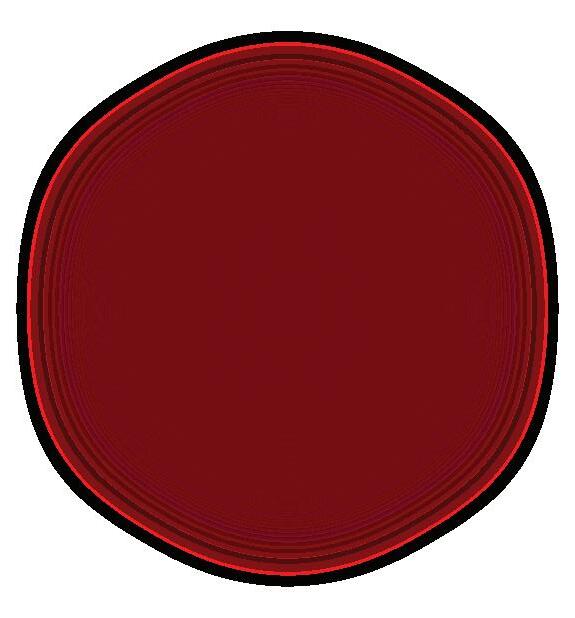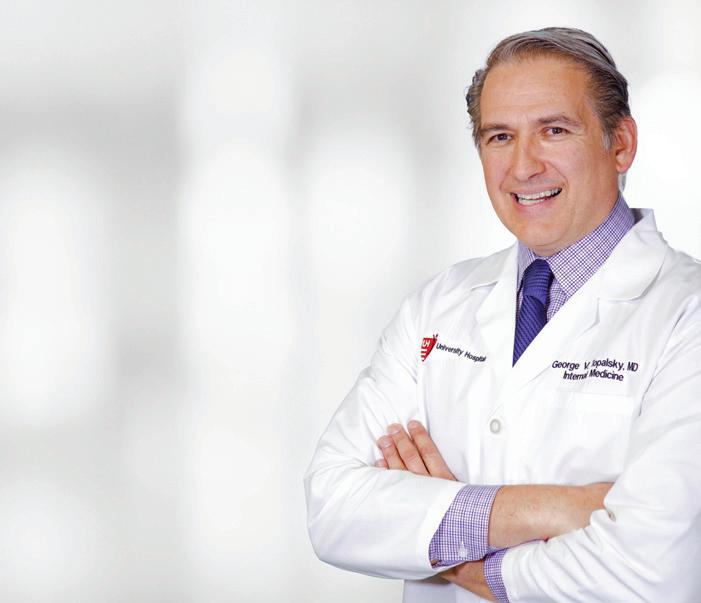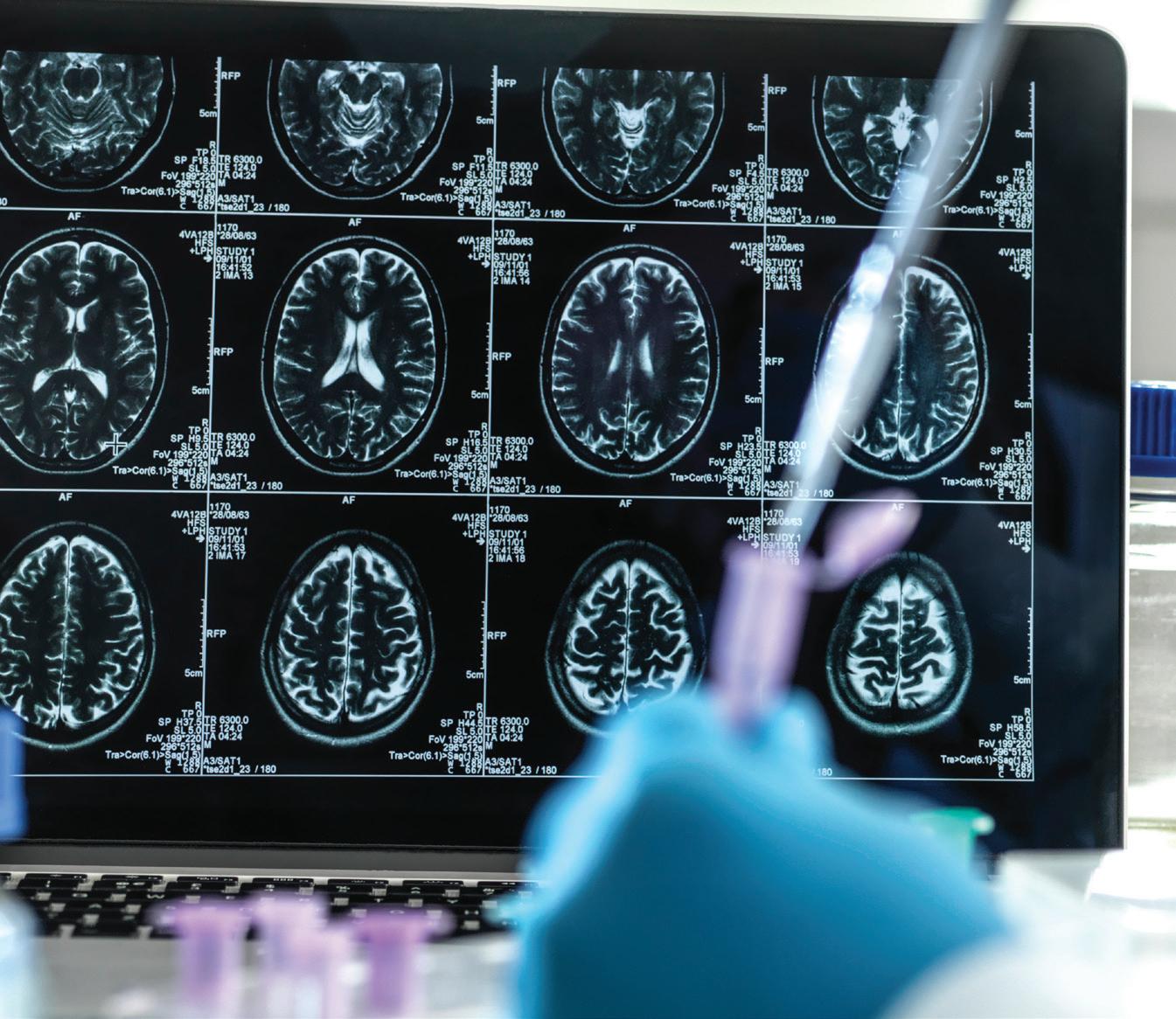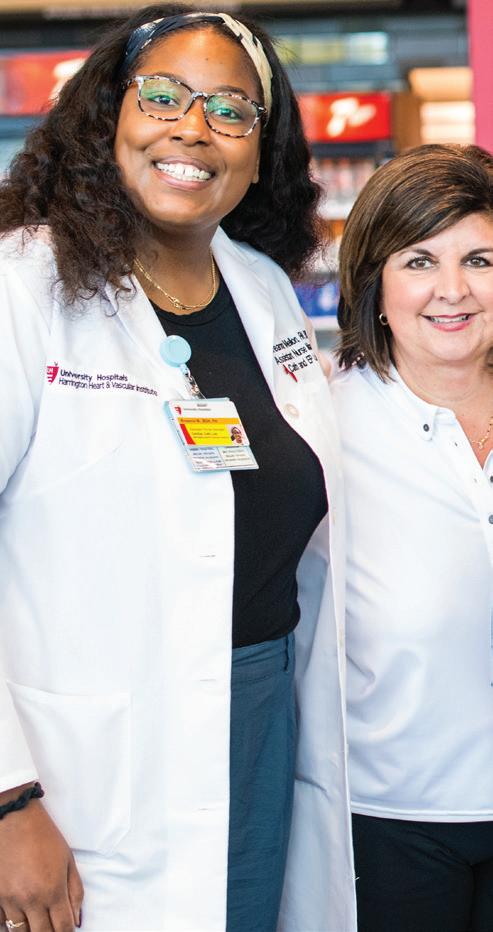














Ashland
UH Samaritan Medical Center
UH Baney Road Health Center
UH Kettering Health Center
UH Samaritan Health Center
Ashtabula
UH Conneaut Medical Center
UH Geneva Medical Center
UH Ashtabula Health Center
Cuyahoga
UH Ahuja Medical Center
UH Beachwood Medical Center
UH Cleveland Medical Center
UH Parma Medical Center
UH St. John Medical Center
UH Broadview Heights Health Center
UH Euclid Health Center
UH Foley ElderHealth Center
UH Independence Health Center
UH Landerbrook Health Center
UH Mayfield Village Health Center
UH Minoff Health Center at Chagrin Highlands
UH North Olmsted Health Center
UH Otis Moss Jr. Health Center
UH Rainbow Babies & Children’s Ahuja Center for Women & Children
UH St. John Health Center
UH Solon Health Center
UH Suburban Health Center
UH Westlake Health Center
UH Bedford Wellness Center
UH Glenville Wellness Center
UH Richmond Wellness Center
Highland Springs Hospital
UH Rehabilitation Hospital
Southwest General Health Center
Southwest General Strongsville Medical Center
Geauga
UH Geauga Medical Center
UH Bainbridge Health Center
UH Chardon Health Center
UH Chesterland Health Center
UH Evans Middlefield Health Center
UH Geauga Health Center
Lorain
UH Elyria Medical Center
UH Amherst Health Center
UH Avon Health Center
UH North Ridgeville Health Center
UH Sheffield Health Center
UH Avon Rehabilitation Hospital
Lake
UH Lake West Medical Center
UH TriPoint Medical Center
UH Lake Continuing Care Center
UH Concord Health Center
UH Lake SOM Health Center
UH Madison Health Center
UH Mentor Health Center
UH Mentor Hopkins Health Center
UH Perrico Health Center
UH Willowick Health Center
UH Brunner Sanden Deitrick Wellness Center
Medina
UH Medina Health Center
UH Sharon Health Center
Southwest General Brunswick Medical Center
Portage
UH Portage Medical Center
UH Aurora Health Center
UH Kent Health Center
UH Mantua Health Center
UH Streetsboro Health Center
Richland
UH Samaritan Richland Health Center
Summit
UH Cuyahoga Falls Health Center
UH Fairlawn Health Center
UH Hudson Health Center
UH Twinsburg Health Center
Western Reserve Hospital
Western Reserve Hospital Urgent Care


Dear friends,
As we reflect on 2024, we take immense pride in sharing University Hospitals’ remarkable journey in pioneering care and transforming lives together. This year showcased the resilience, ingenuity and dedication of our caregivers as they rose to meet unprecedented challenges while delivering exceptional outcomes for our patients and community.
The healthcare landscape in 2024 continued to present its share of challenges, including persistent inflation as well as elevated labor and supply chain costs. Yet, even amidst this demanding environment, UH achieved extraordinary milestones. We laid solid foundations for lifelong health, advanced groundbreaking solutions to complex medical challenges and deepened our connection with the communities we serve. These achievements, along with many others highlighted in this report, underscore our unwavering commitment to improving lives through innovation, compassion and excellence.
In addition, we highlight below other incredible milestones we’ve reached as a team:
• Significantly enhanced patient access by increasing appointment volumes 7.7% over last year.
• Increased new patient specialty visits 20%, illustrating the growth of our tertiary services.
• Grew total surgical volumes by nearly 2,200 cases, demonstrating not only our improvement in OR efficiency but more patients choosing UH for their complex care.
• Expanded and enhanced community services through key investments and certifications, including improved cath lab and nuclear medicine services in the South Market; new orthopedic, stroke, and chest pain certifications in the East Market; and expanded offerings in the Far East Market, such as occupational therapy, pain management, neurology and level 2 maternal and newborn services.
In the West Market, we introduced a new outpatient surgery center, outpatient plastic surgery clinic, and structural heart program while achieving level 2 cath lab designation. At our Academic Medical Center, we earned over 40 certifications and advanced robotic surgery. We also strengthened women’s and children’s services with the Smile Suite, the Maternal Fetal Medicine Mobile Imaging van, and the Team Birth program at all five of our OB hospitals.
• Continued advancing research and discovery as demonstrated by another record year in extramural research funding, where we eclipsed $200 million.
• Affirmed our bond ratings from Moody’s and S&P, demonstrating the strength of our strategic plan and agility in responding to an evolving industry landscape.
• Advanced our value journey, including reducing costs for Medicare patients by $40 million, which resulted in UH receiving $18 million in shared savings, a 50% increase over last year.
• Attained numerous awards and accolades, including Best Regional Hospital for Equitable Access by U.S. News & World Report, where we were the only Ohio hospital on their inaugural list, and America’s Dream Employers by Forbes, where we were the only Ohiobased company in the Top 10 and shared company with some of the country’s most iconic brands.
• Achieved our sixth consecutive year of record-breaking support thanks to $262.3 million in contributions, demonstrating the passion and generosity of our community and serving as a testament to the expert care delivered every day by our caregivers.
As we close this chapter of 2024, our heartfelt gratitude goes to the true heroes of our story – our exceptional caregivers. Their tireless dedication, innovative spirit and compassionate care are the driving forces behind our success. Together, they have not only elevated UH to new heights but have solidified our role as Northeast Ohio’s trusted partner in health. Our caregivers’ passion for excellence and community has transformed challenges into opportunities, reinforcing the bond of trust we share with those we serve.
Finally, we extend our deepest thanks to our community of supporters. Your partnership fuels our mission and inspires us to go above and beyond in delivering world-class care. Together, we are building a legacy of health, hope and healing – one that will continue to thrive for generations to come.
Sincerely,

Chair, UH Board of Directors
Cliff A. Megerian, MD, FACS Chief Executive Officer, University Hospitals Jane and Henry Meyer Chief Executive Officer Distinguished Chair
Outpatient procedures
4,427,914 Physician visits
Unique patients seen
Emergency Department visits
Urgent Care visits1
Surgical Cases 134,435 Total
141,179 Total Discharges
99,554 Acute
33,667 Observations
7,346 Newborns
612 Post-acute
50.1% Medicare
27.0% Commercial
16.6% Medicaid
4.9% Other
1.4% Self Pay
$6.4 billion Total operating revenues Joint UH-CWRU clinical & translational research (includes NIH grants to CWRU School of Medicine attributable to UH Cleveland Medical Center) Sponsored research funding to UH Cleveland Medical Center (including industry-sponsored clinical trials)
1 Urgent Care visits include joint venture activity.
2 Includes UH Medical Practices (UHMP) and UH Medical Group (UHMG) providers at UH-owned practices, UH Lake providers, plus residents, fellows and allied-health providers.
3 Includes MD, DDS, DO, PhD and DMD at the medical centers and freestanding ambulatory surgery centers who are not UH-employed providers.
4 System consolidated net income including non-operating activity. Operating margin, excluding non-operating activities, was (2.7)%.
5 The amounts represent research funding to the UH clinical departments through the Case Western Reserve University School of Medicine and the research conducted at UH Cleveland Medical Center, including clinical trials.
6 Total Portfolios have been restated from prior year’s presentation to conform to current methodology.

Primary care is often the gateway for patients into University Hospitals, and it can take a patient from pediatrics in childhood to the health challenges that occur in midlife and beyond. The best healthcare is often proactive. That means, whenever possible, addressing health issues before they lead to illness or a chronic condition. That emphasis begins with screenings in infants and toddlers and carries through to the wellness screenings in middle-age and beyond. An ongoing connection to a UH primary care provider is one of the surest ways to maintain healthy habits, and get timely screenings, that will both encourage wellness and allow early intervention if illness interferes.
Newborn babies bring hope and joy to their parents. But making sure that both moms and babies thrive cannot be left to chance.
At UH Rainbow Babies & Children’s Ahuja Center for Women and Children in Cleveland’s MidTown neighborhood, an innovative program – HealthySteps –addresses the health and well-being of babies and their moms.
Designed for families with children under the age of 3, HealthySteps utilizes the pediatrician’s office – a convenient and familiar location – to ensure that these children have a strong start in life using relational support.
“We meet with the family as part of their infant’s well visit, introduce ourselves and offer an extra layer of parenting support,” said Holly Pangrace, LPCC-S, who serves as one of the team’s HealthySteps specialists. “We try to form a relationship with the family, who often feels very vulnerable during this time.”
HealthySteps specialists can provide short-term support for specific emotional, developmental or behavioral concerns, such as coaching parents on how to tackle sleep challenges with their toddlers. For families with ongoing stressors, such as those where parents are navigating postpartum depression or anxiety, the HealthySteps specialist also joins the pediatrician as part of ongoing well-child visits.
The UH Rainbow Ahuja Center is now part of HealthySteps’ national network, said Sarah Ronis, MD, PhD, a physician in the practice who co-directs the program with Kimberly Burkhart, PhD, a clinical psychologist.
Funding to support the planning and implementation of HealthySteps at the Center has been generously provided by the William J. and Dorothy K. O’Neill Foundation and the Eva L. and Joseph M. Bruening Foundation.
“In 2024, our first year in operation, we served nearly 300 families, and we expect that our reach will only continue to grow as we’ve now expanded to also include our pediatric residents in the model. We’re immensely grateful to our local and national partners for their support in bringing this program to UH Rainbow.” – Sarah Ronis, MD, PhD
As children enter their next stage of life, dental health can present a concern as they are sometimes away from their families in school or daycare and eating new foods. To address dental cavities, officially known as caries, University Hospitals pediatricians took another proactive step to combat the most common of all chronic conditions in children if left untreated.
A key reason for the high numbers of children with cavities is lack of awareness of the importance of baby teeth and thus lack of dental care. While most young children have regular appointments with a pediatrician, they often do not have dental check-ups.
Now a pair of new studies at UH Rainbow Babies & Children’s Hospital has identified an innovative way to promote dental care, one that works for both families and clinicians.
The starting point? Those pediatric visits.
The studies, led by Suchitra Nelson, PhD, Associate Dean for Clinical and Translational Research at Case Western Reserve University School of Dental Medicine and funded by the National Institute for Dental and Craniofacial Research, enrolled 18 UH Rainbow-affiliated pediatric practices in a randomized clinical trial. The study compared
a new intervention framing caries (tooth decay) as a chronic illness against the traditional oral health education typically provided by pediatricians.
The research team recruited more than 1,000 Medicaidenrolled preschoolers and their parents, plus more than 60 pediatricians and nurse practitioners. Intervention practices received cues from the electronic health record system to discuss oral health, plus tools and visual aids to use with families during the office visit. Additionally, the clinicians provided a list of Medicaid-accepting dentists in the area to the families.
In separate qualitative research, the team also found that the intervention was well-received by clinicians.
“We learned that clinicians preferred the new approach, and that the new tools were easy to integrate into their daily practice. We also found that the children they served were significantly more likely to receive needed dental treatment and less often had untreated decay at the end of three years,” said Sarah Ronis, MD, PhD, a pediatrician at UH Rainbow who worked on the study.
“It’s really exciting to see how impactful pediatricians can be, simply by combatting the myth that it doesn’t matter what happens to “temporary” baby teeth.”
– Sarah Ronis, MD, PhD

Annual Medicare wellness visits with primary care providers can make a powerful difference to a patient’s health, and they are a key component of University Hospitals’ quality improvement efforts.
During these extended visits, providers review a patient’s health risks and immunizations, they may identify preventable health conditions, and they also can schedule timely cancer screenings and those for other illnesses.
In the past four years, the numbers of UH patients who have had these annual wellness visits have increased dramatically because of the diligence of providers in UH’s Primary Care Institute.
In 2019, about 33% of eligible patients of UH Primary Care Institute providers had these annual wellness visits. In 2024, that number jumped to 73%. As a result, breast cancer screenings during those five years went from 60% to 83% and colorectal cancer screenings rose from 50% to 82%.
Patients with diabetes that was not well-controlled dropped from 31% to 14% in that same time, while those with controlled hypertension rose from 66% to 75%.
“These visits have really given primary care providers a way to identify patients who are not doing that well, and most of them will get the screenings the physician recommends, because patients tend to trust their primary care providers.
– Sona Kirpekar, MD
Sona Kirpekar, MD, is a longtime primary care physician at the UH Westlake Health Center and also Director of Population Health for the Primary Care Institute.
“Primary care physicians and advanced practice providers have always wanted to do what’s right for patients,” said Dr. Kirpekar. When Medicare changed its reimbursement parameters, UH took the opportunity to leverage the allowed elongated visit time to create a population health program that would educate patients on how to improve their health outcomes. And that is a win-win for the patient and the payer.
“During the visit, we talk to the patients about the importance of all their screenings, including coronary calcium testing, low-dose CT scans for lung cancer and bone density scans,” she said.
“And in 2024, through our access enhancement initiatives that were buoyed with Epic, we now make referrals and schedule the screenings before the patient even leaves the office.”



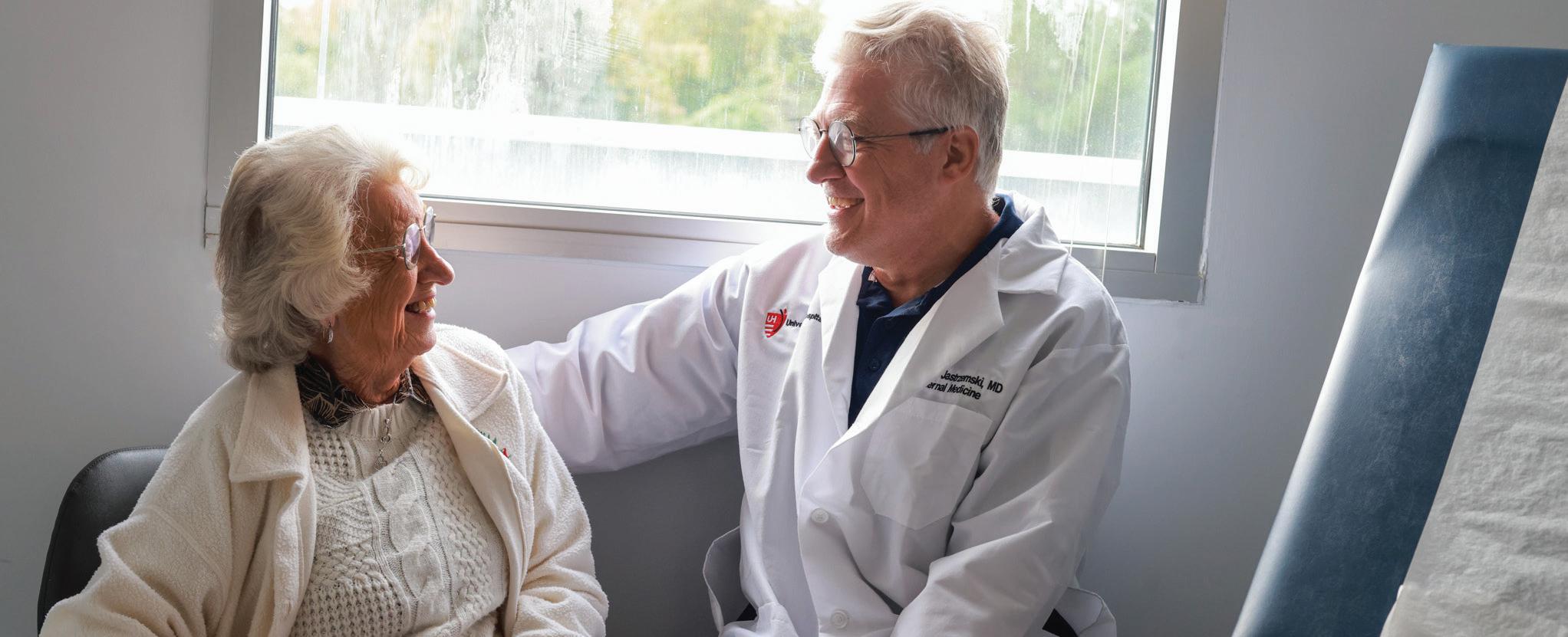
Sometimes it seems more compelling to help others before focusing on your own needs.
That’s how Helen Bishop felt at 65 when her primary care physician (PCP) of several years, Edward Jastrzemski, MD, called to remind her she was overdue for a mammogram.
“I hadn’t had one for a long time and I didn’t think I needed it,” said Helen, who lives in Portage County. “I told him, ‘Well, I can’t do anything about it now, my mother is visiting.’ And he said, “`It’s time for you to think about yourself.’”
So, she had one scheduled, and it revealed something that needed further investigation. “They did a biopsy, which turned out to be cancer. I then got a lumpectomy followed by 35 radiation treatments.”
That was 25 years ago, and the cancer never recurred. Today, Helen is 90, she and her husband live in their same home, and Dr. Jastrzemski is still her doctor.
Her story epitomizes the value of a long-term connection with a primary care physician for patients and their health.
“He knows me better than anyone, and we decide together what to do,” she said.
Not everyone has a longtime connection to a PCP or worse, any connection at all.
Having one doesn’t just make sense from a health perspective, though check-ups and screenings can uncover minor and major conditions, but it’s also a huge help when you need a doctor in a looming crisis.
Dr. Jastrzemski’s 30-year length of practice out of the same hospital, University Hospitals Portage Medical Center in Ravenna, might seem unusual. But there are other physicians all around the UH system whose practices also span decades.
In fact, in 2024, UH made building genuine connections and creating an
empathy-driven experience with every patient one of its highest priorities. This means listening closely, understanding their concerns, responding with care, and meeting them with compassion and a mindset of ‘how can I help?’ While it might sound like a “no brainer,” it’s unique in the healthcare space.
UH is taking the best experiences from the retail sector and applying them to healthcare to move from a ‘hospital’ mindset to a ‘hospitality’ mindset.
“It’s very beneficial to have this approach,” said Dr. Jastrzemski. “You know so much about the patient because the history is there.”
When serious health issues occur, the connected provider knows more about the patient’s needs and preferences, which in turn provides the patient with a sense of trust that brings welcome comfort.
As Helen will tell you, that trust saved her life.
Complex medical challenges require innovative thinking to find and implement new solutions for our patients. In 2024, University Hospitals specialty physicians and their teams continued to bring hope and possibilities to complex medical issues with state-of-the-art technology and world-class expertise. Their innovations span all divisions and departments of our health system, but important highlights for 2024 include efforts in anesthesiology, emergency medicine, trauma care, pediatric infectious disease, and neurology and neurosurgery.
The Department of Anesthesiology and Perioperative Medicine is a hard-working component of our health system, with nearly 500 providers and support staff. These dedicated professionals ensure the safety, comfort and well-being of patients during surgeries and procedures, providing general and regional anesthesia, pain management, and critical care medicine services. Their expertise touches nearly 140,000 surgical cases and obstetric deliveries each year.
The team also is constantly innovating. Our anesthesiologists are active in groundbreaking research and employing modern training modalities to improve patient outcomes. Our newly upgraded state-of-the-art anesthesia simulation system, for example, offers anesthesiology residents and other trainees plentiful learning opportunities. This ensures that when they inevitably must manage an uncommon but critical clinical problem, they’re ready.
Minimizing anesthesia effects, optimizing health for
The anesthesiology team also innovates in minimizing and tailoring anesthesia to each patient. For post-surgery, trauma and cancer patients, our experts incorporate sophisticated ultrasound-guided nerve blocks, providing nearly 4,000 regional pain blocks across the UH system in 2024. These adjuvants with general anesthesia, offered across multiple procedures, allow for enhanced and shorter recovery time. This is especially crucial for the growing population of older adults, who have unique issues and risks with general anesthesia. “We’re actively seeking to
140,000 surgical cases and obstetric deliveries each year are handled by Anesthesiology and Perioperative Medicine
improve the experiences and outcomes of older patients with a novel program of senior health optimization,” said Marc Popovich, MD, Chair of the Department of Anesthesiology and Perioperative Medicine at UH Cleveland Medical Center and George H. Young and Junie Hoang Chair in Anesthesiology.
Medical emergencies manifest themselves in many ways, from stroke to cardiac arrest and so many others. So the Emergency Medicine team at UH also innovates to match each moment – a necessary part of meeting constantly evolving challenges.
“We need ways to train for those high-risk, low-volume procedures for when it’s the middle of the night and you’re the only person who’s around who can do it.” – Vicki Noble, MD, Chair of Emergency Medicine at UH Cleveland Medical Center and Arthur D. and Kazuko Maine Endowed Chair in Emergency


One solution for this at UH is the Emergency Medicine SIM Lab, led by physician Daniel Saadeh, MD, and coordinator William LaRue. It includes a van, mannequins and other equipment for practicing at sites across the system. Teams of physicians, nurses and advanced practice providers (APP) run simulations together of specific emergency situations and “procedure refreshers” to refine their skills. They then “debrief” afterward to discuss how they could improve next time – and when the situation arises in real life.
What started as a training tool for medical residents has now expanded to attending physicians, APPs and nurses, with simulation classes increasing by 30% in 2024 and a 16% increase in attendance.
Emergency Medicine is also innovating new approaches in pain control for patients in the ED. In 2024, the department and UH Connor Whole Health received a federal grant of nearly $1.5 million to implement a program offering patients alternatives to opioids. Leading the project are Kiran Faryar, MD, MPH, Emergency Medicine’s Director of Research; project manager Jennifer Horn, MS, BSN, RN, MPH; and Sam Rodgers-Melnick, MPH, MT-BC, a clinical research data specialist with UH Connor Whole Health.
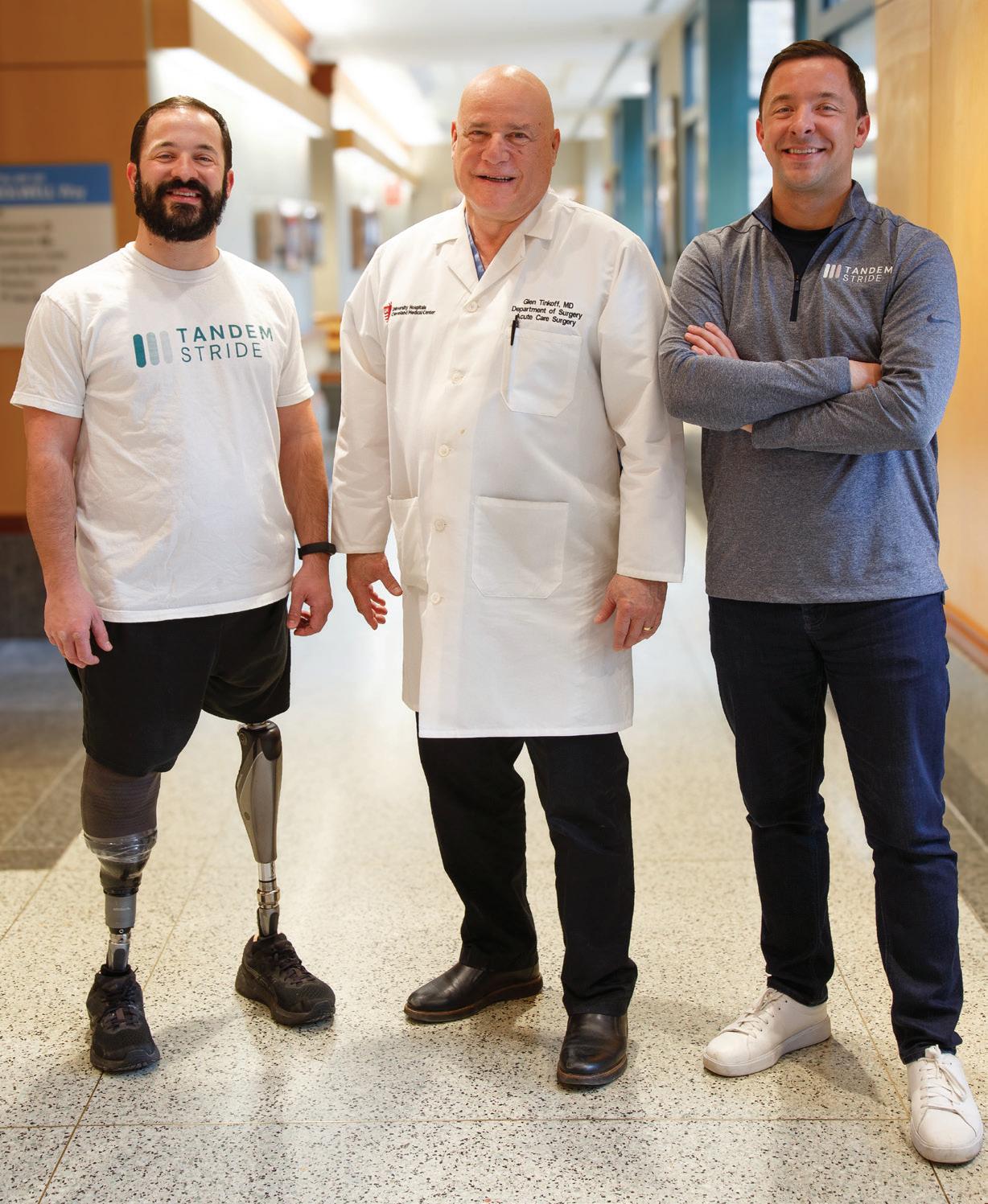
Many medical emergencies are also traumas, such as gunshot wounds or severe head or spinal cord injuries. Recognizing that repairing the injury is just the first step in a patient’s recovery, our UH team in Trauma & Acute Care Surgery offers crucial opportunities for social support.


Our injury and violence prevention program, for example, pairs victims of violence with an advocate to guide them through the difficult days of their hospitalization and link them to community support. And a new program launched in 2024 offers trauma patients access to peer support through a smartphone app.
“The injuries are life-altering, so to have somebody who’s there to support you, who’s further along in their recovery, is helpful.”
–
Glen Tinkoff, MD, System Chief, Trauma and Acute
The department, UH Ventures and a company called TandemStride collaborate to offer this to UH patients.
Since 2013, UH Rainbow Babies & Children’s Hospital has run a successful program to strictly safeguard the use of antibiotics with hospitalized children – with an eye toward preventing antibiotic resistance. In 2024, we received a $1 million grant from the Patient-Centered Outcomes Research Institute (PCORI) to expand this program –now to outpatient settings such as doctor’s offices and emergency rooms.

The project will be co-led by Marlene Miller, MD, MSc, Pediatrician-in-Chief, Chair of Pediatrics and Marsha L. Antonucci Distinguished Chair of Pediatrics, and Ankita Desai, MD, Chief of Pediatric Infectious Diseases and Medical Director of the Pediatric Antimicrobial Stewardship Program and Rainbow Babies & Children’s Foundation John Kennell Chair of Excellence in Pediatrics. Its goal is to improve antibiotic prescribing and implement important research showing that narrow-spectrum antibiotics appear just as effective as broad-spectrum in treating acute respiratory tract infections among children, with fewer side effects.
Over 30% of outpatient antibiotic prescribing is considered inappropriate
“Unfortunately, it’s estimated that over 30% of outpatient antibiotic prescribing is considered inappropriate,” said Dr. Desai. “We must partner with pediatricians to develop new tools and guidance to decrease this number. We already have a lot of experience in antibiotic stewardship in the inpatient setting, and we’re excited to use what we know to overcome the barriers to appropriate prescribing in the outpatient setting.”
Changing the landscape for stroke

Patients suffering a large, ischemic stroke – a “brain attack” caused by a blood clot – have not typically been treated with a mechanical thrombectomy to remove the clot. But results from the SELECT2 study – led globally by UH’s Amrou Sarraj, MD, Director, Stroke Center and Stroke Systems with the UH Neurological Institute and holder of the George M. Humphrey II Chair in Neurology – are now changing that.
SELECT2 results from around the world, published in The Lancet in 2024, show that patients with large strokes had a dramatically better recovery after thrombectomy plus medical management, than patients who only received standard medical management.
UH made a major contribution to the success of this trial, Dr. Sarraj noted, quickly enrolling a significant number of patients. And the results have impact.
“This is a significant development that resulted in a lot of patients being treated and going back to their families and to society independently,”
said Dr. Sarraj.
On the heels of the success of the SELECT2 study, Dr. Sarraj is leading a new international study, fueled by a $7 million PCORI grant, to explore whether endovascular thrombectomy is effective beyond its current 24-hour treatment window, potentially broadening access to this lifesaving care.

Michael Staudt, MD
Colleagues in neurosurgery, meanwhile, also made great strides in 2024 to give patients more and better treatment options.
This past summer, for example, our neurosurgery team completed a groundbreaking neurological procedure in partnership with a Minnesota-based company. Neurosurgeon Michael Staudt, MD, Director of Epilepsy Surgery, Co-Director of Pain Surgery and Neuromodulation and the George R. and Constance P. Lincoln Chair in Brain Health, used NeuroOne’s OneRF™ Ablation System to achieve an unprecedented 44 ablations over two days, delivered at the patient’s bedside, to address the patient’s complex epilepsy condition.
UH is just the second health system in the nation to employ the OneRF interface.
“The patient has had significant improvements in their seizure frequency, as well as their mood and memory,” said Nicholas C. Bambakidis, MD, Director and Vice President of the UH Neurological Institute, and the Harvey Huntington Brown Jr. Chair in Neurosurgery at UH Cleveland Medical Center.
Additionally, patients at UH with peripheral nerve injuries now also have expanded treatment options. One of three new neurologists and neurosurgeons joining UH in 2024, Stanley Bazarek, MD, PhD, has partnered with the UH neuromuscular team of David Preston, MD, and Christopher Geiger, DO, to form the UH Peripheral Nerve Surgery Center.
“Having surgeons who are world experts in treating patients with peripheral nerve injuries is unique, and having that expertise here at UH is game-changing for us,” Dr. Bambakidis said. “As we move the program to the next level, we’re becoming a destination department for people from around the country.”
Technology’s transformation of healthcare makes patient access to clinicians simpler than ever – for babies with heart complications and for adults with chronic illnesses such as chronic obstructive pulmonary disease (COPD), diabetes or congestive heart failure. The ease of a constant connection between patients at home and University Hospitals providers is shaping the future of healthcare accessibility with programs that keep patients healthy and connected while improving outcomes and decreasing hospitalizations.
Proof that patients with chronic illnesses could safely and effectively be treated while monitored from home was an unexpected and positive offshoot of the COVID-19 pandemic. At that time, the drive toward home monitoring came from the need to keep all but the sickest patients out of the hospital, and it worked well.
“We built this infrastructure during COVID-19,” said Anthony Muni, MD, who leads the new Healthy at Home Virtual Care initiative. “So when COVID-19 decreased, we pivoted and began enrolling other patients in 2023.” The timing dovetailed nicely with the rollout of the new Epic electronic health record platform.
Healthy at Home officially began with the enrollment of patients who had COPD, diabetes or congestive heart failure (CHF). “The reason we focused on those patients is that there are evidence-based treatment guidelines for those conditions,” said Dr. Muni.
Through this program, patients are followed for 30 days and receive daily nurse calls as well as weekly tele-visits from a physician and a pharmacist. Social work, community health workers as well as medics who provide home visits are also part of the program. Patients are provided with blood pressure cuffs, pulse oximeters, blood glucose measuring devices – whatever devices their condition requires. The Healthy at Home staff uses this information to educate patients about their disease states and adjust medications if necessary.

The impressive result: Hospital readmissions have been reduced by about 20% for CHF and other high-risk diagnoses between autumn 2023 and autumn 2024.
In late 2023, 150 patients a month were participating in Healthy at Home. By last December, it was close to 500 patients. A key reason for patients doing well is that “Healthy at Home” also addresses social determinants of health, the non-medical factors that affect a person’s health. These include low income, no access to transportation and food insecurity, including little access to healthful food.
“We check with patients and might find out they didn’t pick up a prescription because it cost $400,” said Dr. Muni. “We can help them pay for that by tapping into several programs, including our UH Meds specialty pharmacy that often seeks funding via grants or manufacturer discounts. They might not have a scale to weigh themselves, and we can get them one. We also can connect them to Food for Life and community resources.”
“Overcoming the issues that many of these patients face at home –that we might otherwise not be aware of – is why we are successful in keeping them healthier. We follow up quickly and wrap them with support.” – Anthony Muni, MD

Having a baby born with a serious heart defect is terrifying to new parents. But learning that the baby can be monitored remotely while at home during high-risk periods offers immense relief.
University Hospitals Rainbow Babies & Children’s Hospital was way ahead of most other hospital systems when it began the Hearts at HOME (High-Risk Outpatient Monitoring and Education) program over 10 years ago. The program provided specialized home care for infants born with a rare condition – a single ventricle heart defect, in which the heart has one functional ventricle instead of two.
As part of the program, these babies – sometimes after spending weeks or even months at the hospital – are monitored at home with pulse oximeters that report blood oxygen levels, a key indicator of the child’s heart health. When the program first started, parents were provided with a specially configured iPad that they used to enter a daily weight, oxygen level, heart rate, and feeding information for the clinical team to review.
New in 2024, parents can now use their smart phones to input this data directly into their child’s MyChart, giving parents 24-hour access to the UH Rainbow cardiology team, who now has immediate ability to read the results.
This prevents life-threatening events, helps the baby’s growth and development and provides the family with education and support.
Katlyn Colegrove’s daughter Kennedy was born with a single ventricle heart defect nearly two years ago.
“Before we left the hospital, they showed us how to properly use the oximeter,” she said. “They also gave us a scale to weigh her. I used to enter the numbers into the iPad but now it goes directly into MyChart.”
There was one occasion, before Kennedy turned 1, when her oxygen level dipped, and her parents took her to the hospital. Thanks to the home monitor, Katlyn recognized this immediately and was able to quickly get her to the hospital. “Kennedy lives a pretty normal life, but having this home monitor gives me peace of mind.”
Sarah T. Plummer, MD, the pediatric cardiologist who heads the Hearts at HOME program, says studies have shown that single ventricle home monitoring programs save lives, and since digital home monitoring was instituted at UH Rainbow, babies spent less time in the hospital overall and are more likely to not need a feeding tube.
“Parents know they have easy access to the medical team 24/7, and during business hours they’ll always reach the same clinician, so there is continuity for them, which is so important for these high risk and complex babies,” she said.


At University Hospitals, we’re dedicated to healthcare that’s always moving forward. In 2024, we pushed the boundaries of medical science with groundbreaking discoveries, revolutionary artificial intelligence (AI) applications, lifesaving transplant advancements and first-in-the-world clinical trials.
Data is everywhere in healthcare – from imaging scans to vital signs to lab results. With the transformative technology of AI, our physicians and their teams can better harness this voluminous data. That means perhaps previously invisible findings are revealed to benefit our patients – always verified though the wisdom and experience of our clinicians.
“The volume of information is so vast that the tools of big data, such as AI, may be leveraged to improve analyses and diagnostic and treatment recommendations.” – Daniel I. Simon, MD, President of Academic & External Affairs and Chief Scientific Officer and the Ernie and Patti Novak Distinguished Chair in Health Care Leadership
AI at work at UH
At UH, for example, we use AI to more precisely identify which patients with high heart disease risk will most benefit from preventive therapies, such as statins and aspirin. For cancer patients, we’re part of a groundbreaking study using AI-based MRI to visualize how rectal tumors respond to therapy. And we use our new Varian Ethos system, which employs AI-assisted organ mapping and treatment
planning, to get the safest and most precise targets for patients undergoing radiation therapy. Tumors change shape and size through radiation treatments – even daily, and we can now adapt the treatment plan each day to exactly match the patient’s current anatomy. We are among the first North American centers to launch Varian Ethos 2.0; patients travel from around the country to seek treatment from our radiation oncologists.
Also in the cancer realm, UH Clinical Research Center Medical Director and Associate Chief Scientific Officer
Daniel Spratt, MD, Chair of Radiation Oncology and Vincent K. Smith Chair in Radiation Oncology at UH Seidman Cancer Center, has developed four separate AI-based biomarkers for prostate cancer. It’s the first AI-based test in oncology that’s been validated in multiple randomized trials and listed in national guidelines. His goal is to give men more accurate information about their prognosis and predict which are most likely to benefit from androgen deprivation therapy – a kind of treatment that helps some men with prostate cancer live longer, but which sometimes has adverse side effects. After years of clinical research validation, these tests are now part of standard cancer management and are covered by Medicare and Medicaid.
Revolutionizing hospital care
AI systems are also helping us work faster and more efficiently. We use AI tools to support tracking hospitalized patients’ vital signs to warn medical staff when a patient is at risk of sepsis – which can occur and worsen incredibly fast. This can prompt timely fluids and antibiotics to save lives.
In coordination with our innovation and commercialization division, UH Ventures, and in conjunction with the UH Clinical Research Center, University Hospitals Cleveland Medical Center has also launched the RadiCLE program to advance AI in radiology, by leveraging UH clinical expertise in industry collaboration. The program already has impressive results in supporting the clinical diagnosis and treatment of pulmonary embolism, stroke, aortic dissection, free abdominal gas and pneumothorax (collapsed lung), said Leonardo Kayat Bittencourt, MD, PhD, Vice Chair of Innovation in the Department of Radiology. In 2024, the department earned designation as an American College of Radiology® Recognized Center for Healthcare-AI –distinguishing it as a leader in the field.
University Hospitals Cleveland Medical Center also is conducting a clinical trial in collaboration with global healthcare AI innovator Qure.ai to further investigate the efficacy of the qXR AI algorithm, an artificial intelligence tool designed to enhance the detection of pulmonary nodules on chest X-rays, by comparing its ability to detect pulmonary nodules to a radiologist’s interpretation of those same chest X-rays.
As AI expands its clinical capabilities, UH physicians and their teams will continue to harness its powerful capabilities, while always maintaining a human touch. Physicians remain the drivers of personalized, patient-centered care.
“AI can be used as a powerful tool to enable caregivers and health systems to be more responsive, accurate, effective and timely.”
– Daniel I. Simon, MD

Leland Metheny, MD and Tracey Lynch
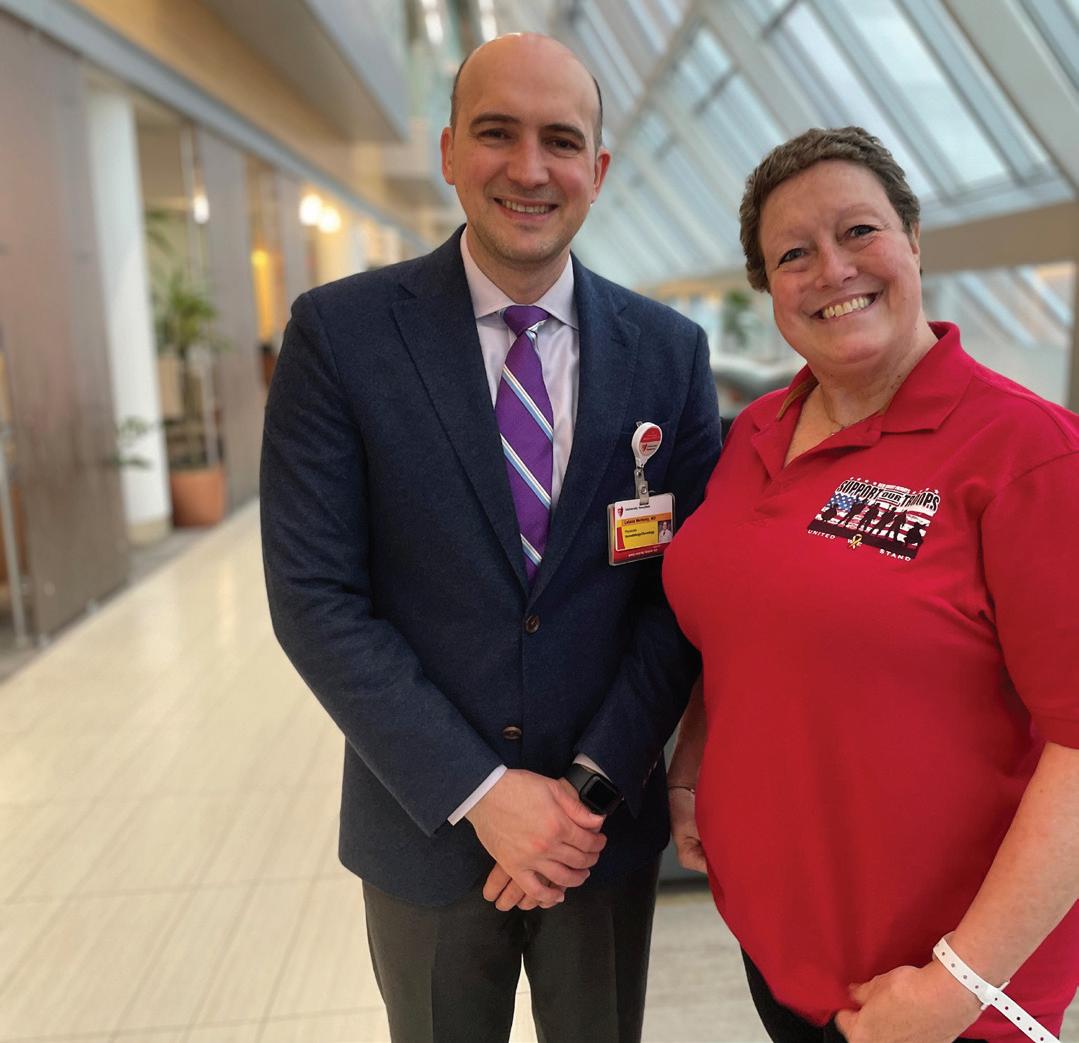
Beyond the new technologies of AI, UH is also employing existing technologies to expand clinical care. In 2024, for example, multiple myeloma patient Tracey Lynch became among the first patients at UH Seidman Cancer Center to receive a lifesaving bone marrow transplant as an outpatient. Since that time, the practice expanded to more patients. The team has now done 15 outpatient transplants and is expanding to other treatment modalities.
Historically, bone marrow transplantation required patients to remain in the hospital for weeks after stem cell transfusion to reduce infection risk. However, research has shown that the procedure can also be safe and effective without a lengthy hospital stay.
Here’s how it works: After the initial outpatient bone marrow transplant, which takes up to eight hours, the patient can leave the hospital and then return daily for labs and assessment. If their blood counts go down, they receive a blood transfusion. Within 10-15 days, when their red and white blood cells and platelets start growing back, patients’ physical symptoms start improving.
Tracey stayed at the nearby Hope Lodge in Cleveland during her transplant outpatient visits.
“I liked the fact that I wasn’t trapped in a hospital room and could just walk to the hospital,” she said.
“She’s recovered her blood counts and has no significant organ dysfunction,” said Tracey’s doctor, UH hematologist Leland Metheny, MD.
University Hospitals is a national leader in clinical research, offering our patients access to more than 3,400 active clinical trials of new drug, device and cell-based treatments. Clinical trials offer hope to patients with limited options. In 2024, two clinical trials emerged as important in their field or testing previously untried approaches to care.
Tackling urinary incontinence in women in a patient-centered way
In 2024, David Sheyn, MD, Division Director of Urogynecology and Pelvic Reconstructive Surgery at UH Urology Institute, secured a $9.2 million grant to launch the first-ever randomized clinical trial comparing two treatment options for urinary incontinence that are put in place at the time of pelvic organ prolapse repair surgery. This is the largest grant UH has received to date from the Patient-Centered Outcomes Research Institute.
Pelvic organ prolapse occurs when a pelvic organ, such as the bladder, uterus or bowel, protrudes into the vagina and causes an uncomfortable bulge or problems with the bladder or bowel. The surgery restores pelvic organs to their proper positions, and different approaches to treat urinary incontinence are a crucial component.
As part of the new trial, Dr. Sheyn is leading the study with colleagues at 10 participating sites across the nation to compare the clinical outcomes of two current surgical options: mesh slings and urethral bulking at the time of pelvic organ prolapse repair. The goal is to determine how these two procedures affect a patient’s quality of life, both in the short term and the long term. Urethral bulking involves injecting a gel underneath the lining of the urethra to narrow the urethral canal.
Importantly, this new trial was designed with input from patients.
“This ensures that the study prioritizes a patient-centered approach,” Dr. Sheyn said. “We highly value patients’ input when deciding on treatment options.”
Dr. Sheyn says he’s confident this study will attract a wide range of study participants because the study is measuring the outcomes of two currently available options, making findings more relevant to future patients.

2024 Research by the Numbers
$214M Research Funding
3,420 Active Clinical Research Studies
1,473 Peer-Reviewed Articles
Faculty 1,193 Residents & Fellows
Programs
2,272 Medical Student Clerkships & Elective Rotations
UH + UH-CWRU Joint Invention Disclosures
Novel CAR T-cell trial offers hope for multiple myeloma patients
In 2024, UH also launched a new CAR T-cell trial. CAR T-cells are tiny warriors. Genetically designed from a person’s own immune cells to target receptors on cancer cells, they seek and destroy malignant cells bearing those same receptors.
Although most CAR T therapies attack just one marker, researchers at UH Seidman Cancer Center have created CAR T-cells that attack three markers at once – a triple threat. This is important because cancer cells can learn to escape from CAR T-cells. With three targets instead of one, the odds of success for the cancer patient increase. These unique cells are known as BAFF CAR T.
“BAFF CAR T-cells will bind to BAFF receptors on these B cell cancers and will activate T-cells to specifically kill them, without affecting other normal cells,” said UH Seidman and Case Western Reserve University scientist Reshmi Parameswaran, MS, PhD, who led the initial basic research. CAR T therapies currently approved by the FDA target a different, single receptor on cancer cells.
Now this groundbreaking laboratory discovery has made its way to a patient’s bedside through a clinical trial for UH Seidman patients. UH hematologist and oncologist Leland Metheny, MD, opened a Phase 1 clinical trial testing the new cells in patients with relapsed or difficult-to-treat multiple myeloma.
Dr. Metheny says he’s excited about finding new options for the patients he treats.
“There is a persistent need for development of new, effective therapies for treatment of myeloma. Through this trial, we are assessing if BAFF CAR T-cells can become another strategy for our patients with refractory disease.”
– Leland Metheny, MD

Around the world, 400 million people are living with a rare genetic disease, of which half are children. Less than 5% of rare diseases have an approved therapy, representing a critical, global unmet clinical need. The Oxford-Harrington Rare Disease Centre and Accelerator is a partnership between University of Oxford in the United Kingdom (UK) and UH Harrington Discovery Institute in the U.S. The goal is to advance 40 drugs into clinical trials in the next 10 years. The Rare Disease Centre is co-led by Oxford Professor Matthew Wood and UH’s Matthew Anderson, MD, PhD, who serves as Co-Director. In 2024, we announced the first class of 10 Oxford-Harrington Rare Disease scholars, who will receive support for breakthrough treatments for rare and ultra-rare diseases across neurologic, cancer and metabolic disease areas. The recipients represent institutions across the UK, U.S. and Canada.
Advanced 203 medicines in the making
Supported 72 academic medical centers
Facilitated 21 medicines being tested in clinical trials
Enabled 15 licenses to pharma
Launched 42 start-ups created through partnerships with venture capital and other investors
Awarded 25 Scholar grants in 2024 to top researchers both nationally and internationally
At the heart of University Hospitals’ mission is an unwavering commitment to serve all patients with compassion and excellence. Guided by our founders’ belief that “the needy are the most worthy,” we strive to ensure equitable access to high-quality care for every individual who walks through our doors. In 2024, our caregivers and volunteers continued to demonstrate extraordinary dedication, extending their talents and compassion to address the diverse needs of our community. Through expanded outreach programs, partnerships and targeted investments, we strive to ensure we have a thriving workforce that reflects the communities we serve, upholds our legacy of service and strengthens the bonds that unite us. By investing in our community, we are not only fulfilling our mission but also honoring a tradition of care that transforms lives and inspires hope for a healthier future.
Understanding the critical role that early engagement plays in shaping future healthcare professionals, University Hospitals developed a series of programs that engage students at various educational stages. The UH Future Nurse Academy promotes the pursuit of a nursing career for high school students. Through partnerships with multiple local colleges, the two-week immersive, paid program offers students hands-on experiences and insights into the profession of nursing, with academic partners contributing to the curriculum. The program’s success is evident in its rapid expansion. In 2024, UH tripled the number of cohorts and increased participation by over 35%. Several graduates from the inaugural class in 2023 are now starting nursing school.



Participation in the UH Future Nurse Academy in 2024 increased by over 35%.
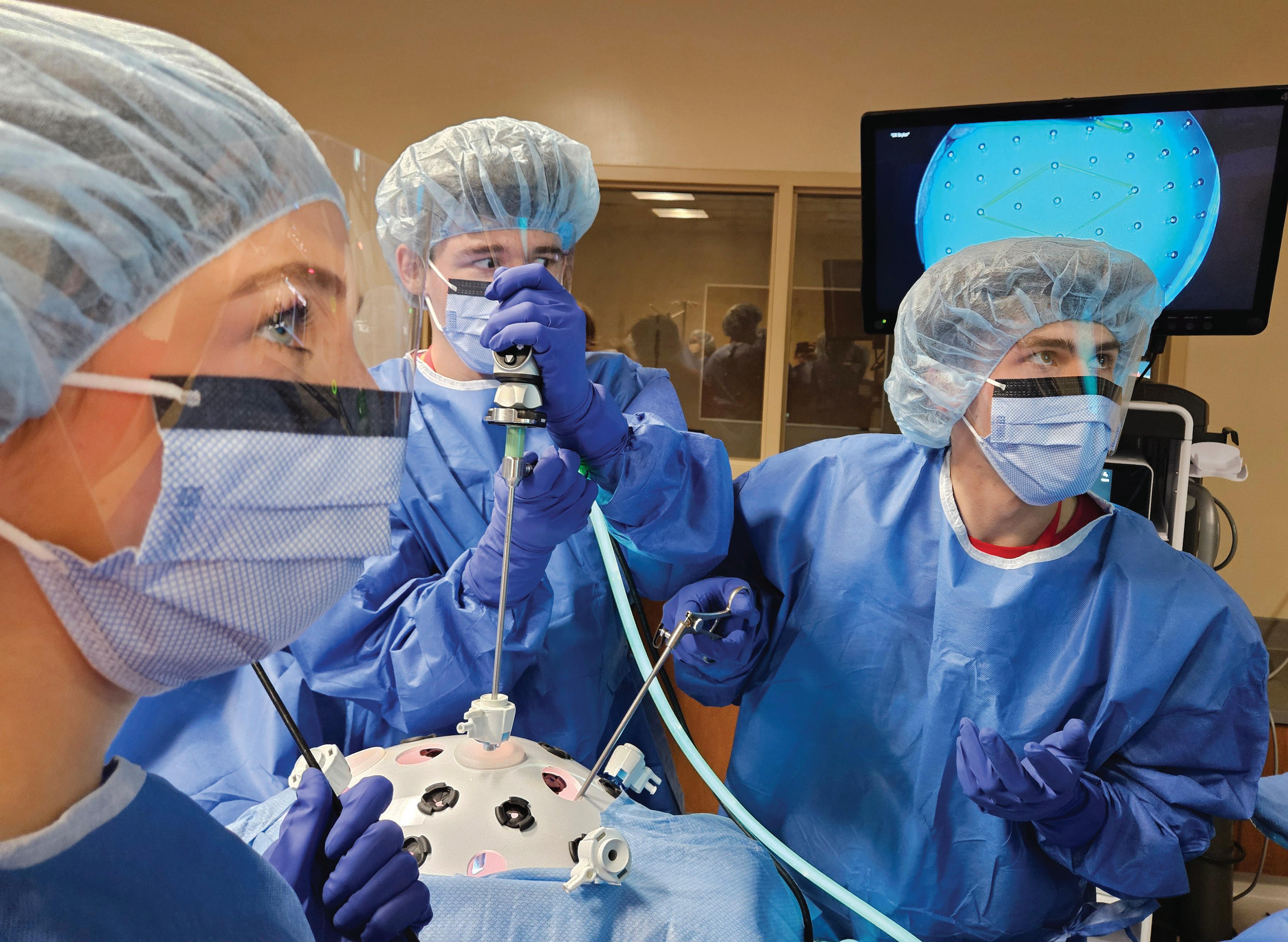
“It is imperative that we empower our youth to envision a future where they can confidently become doctors, nurses and other healthcare professionals.”
– Celina Cunanan, MSN, APRN-CNM, UH Chief Health Impact Officer

The UH Youth Summit (grades 3-12) and UH Health Scholars (grades 8-12) programs focus on engaging students in medicine and healthcare. These programs, which have connected hundreds of students to healthcare careers, are supported by local schools and community organizations and are designed to influence the next generation of healthcare providers.
In 2024, Youth Summit participation rates doubled, with nearly 500 students and their parents engaging in activities such as walking through an inflatable heart to see its details, examining medical devices,


performing suturing and ultrasounds, and learning about childbirth through simulation stations.
The UH Health Scholars program also achieved a milestone in 2024 – witnessing its first cohort of students complete the entire five-year program. This four-week paid summer internship is designed to cultivate the talents and skills of high school students, preparing them for careers in healthcare. By partnering with UH clinicians and practitioners, the program provides guidance in college applications, access to career development opportunities and support for academic and professional success.

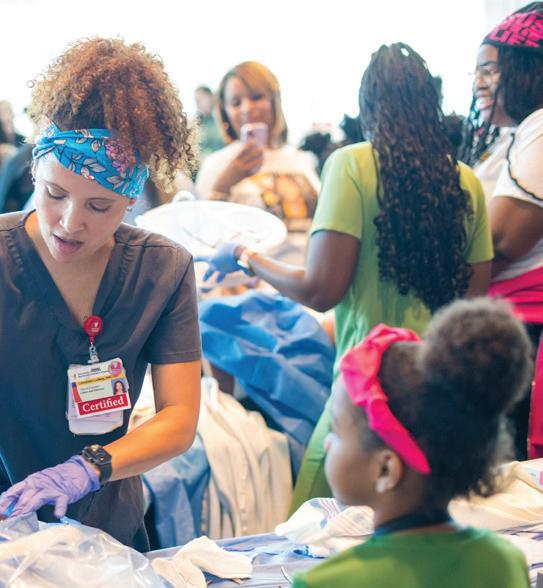
Nearly 500 students and parents attended





Additionally, UH partners with others in the community to increase awareness of healthcare careers and the benefits of caring for one’s community. For example, in 2024, UH Ahuja Medical Center hosted a free, immersive Medical Academy with Beachwood High School, giving more than 20 students real-world experience in healthcare. During the two-day academy, students gained exposure to experts at UH in the fields of cardiology, pulmonary medicine, nursing and more through participating in activities including lung and heart dissections, seminars and live demonstrations. And UH TriPoint hosted a similar experience, partnering with Riverside High School, where they showcased two potential career tracks – the ancillary support services track, which includes jobs in radiology, pharmacy, the hospital’s lab, transportation, environmental services and food and nutrition; and the clinical track, which allowed students to observe jobs in the hospital’s emergency department and inpatient wings.
At the college level, UH joined with Cleveland Clinic in 2024 to engage 16 regional schools of nursing, creating the Nursing Clinical Adjunct Faculty Initiative. Today’s nursing shortage is exacerbated by staffing challenges in nursing schools, which in turn restricts the numbers graduating and entering the workforce. To help address this, the initiative will recruit, train and mentor nursing educators, drawing from UH and Cleveland Clinic’s own talent rosters.
The goal is to expand regional nursing school capacity of nursing students annually by growing additional clinical faculty, mitigating wait lists and enabling expanded recruitment of students.
Each health system will also increase its clinical rotation capacity, increasing annual nursing student throughput. The first training bootcamps will take place in 2025.
University Hospitals also co-developed and deployed the UH WorkUp platform in 2024 to support health career discovery, filling clinical talent shortages by identifying underutilized candidate pools, connecting talent to resources and automating engagement. Since launch, we have centralized candidate pools and automatically cross-pollinated our outreach efforts.

It’s an incredible testament to our 32,000+ caregivers that University Hospitals ranks among Forbes’ Top 10 Dream Employers. The Forbes’ Dream Employers list features 500 employers, including iconic brands such as Microsoft, SpaceX, Google, Apple, NASA, Nike and Bank of America, and UH earned the #9 spot in the nation.
“Dream employers offer employees the chance to do inspiring work, to pursue their passions through engaging career development programs and to collaborate with whip-smart colleagues within a culture of camaraderie, among other things,” said Forbes.
This recognition by Forbes highlights our efforts in creating a Speak Up culture, valuing the input and wisdom from our entire workforce and creating a sense of belonging for our caregivers so that we can retain top talent and recruit new caregivers to our health system.

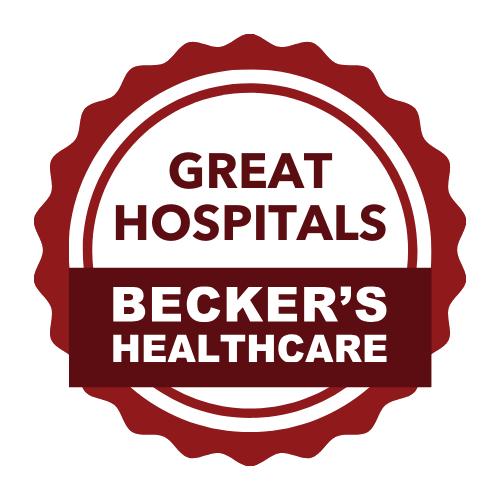

UH Cleveland Medical Center was recognized as the only Ohio-based hospital on the 2024-2025 U.S. News & World Report’s inaugural list of Best Regional Hospitals for Equitable Access. This recognition, awarded to only 2% of hospitals nationwide, underscores our dedication to providing high-quality care to historically underserved communities. It’s a testament to our founders’ pledge to care for the needy and affirms our ongoing efforts to promote health equity.
UH Cleveland Medical Center also was named by U.S. News & World Report to its Best Hospitals list, an achievement it has made 26 years in a row.

University Hospitals Rainbow Babies & Children’s Hospital was recognized as a Best Children’s Hospital for 2024-2025 by U.S. News & World Report. UH Rainbow ranks among the nation’s top 50 children’s hospitals in all 11 specialties, seven of which rank in the top 30. UH Rainbow rankings include: neonatology (9), diabetes & endocrinology (12), orthopedics (13), pulmonology & lung surgery (15), urology (24), cancer (30), nephrology (30), neurology & neurosurgery (35), and cardiology & heart surgery (42), and gastroenterology & GI surgery (42). UH Rainbow is also in the top 50 for behavioral health, a specialty added to this year’s recognition that is not specifically ranked numerically.
UH Food for Life Markets® received the American Hospital Association’s 2024 Dick Davidson NOVA Award for improving community health. This award recognizes hospitals and health systems for their collaborative efforts toward improving community health status through healthcare, economic or social initiatives.
The International Hospital Federation, which represents healthcare organizations from nearly 70 countries, awarded UH an Honorable Mention in the Leadership and Management Excellence Category. From more than 500 entries, UH was one of only three finalists from the United States.


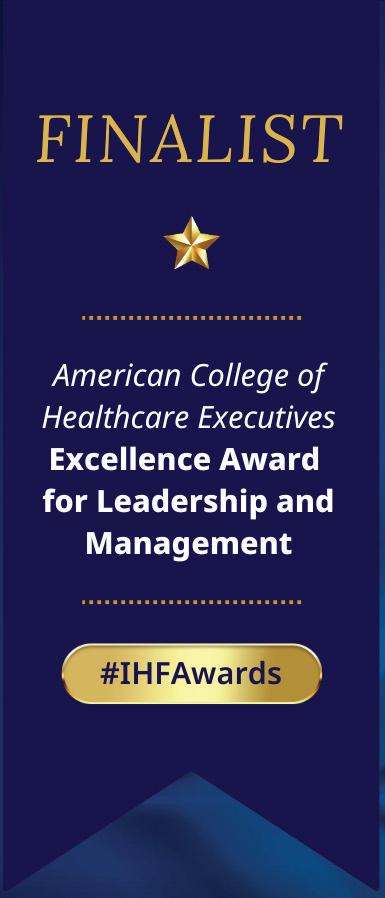
UH Cleveland Medical Center ranked as #16 Academic Medical Center in the World and #8 Academic Medical Center in the United States according to Brand Finance.

In 2024, University Hospitals named 18 clinicians as the newest class of Distinguished Physicians in recognition of their exceptional clinical skills and dedication to patient care and training the next generation of caregivers. These physicians are known as the “doctors of doctors” and were recognized by their peers for their exceptional clinical skills, dedication to patient care, and serving as the top role models and mentors in the training of the next generation of physicians, including medical students, residents and fellows. These ‘distinguished physicians’ also set standards for quality, safety and patient experience, incorporating evidence-based guidelines to prevent and treat disease utilizing the latest technological advances along with compassionate and personalized care.

Dermatology
Mara G. Beveridge, MD
Family Medicine
Louis D. Leone, DO
Medicine
Jill C. Miller, MD
Monte and Usha Ahuja Chair in Clinical Excellence
Karen M. Monheim, MD
Ravi Ramani, MD, MMM
Ellen M. Sabik, MD
Neurology
Deborah Reed, MD
Neurosurgery
Sepideh Amin-Hanjani, MD
Warren R. Selman, MD, Chair in Neurosurgery
OB/GYN
Angelina K. Gangestad, MD
Stephanie Teal, MD, MPH
Orthopaedics
Kevin J. Malone, MD
Pathology
Alessandra F. Nascimento, MD
Pediatrics
Jignesh Dalal, MD
James Strainic, MD
Psychiatry
Mary T. Gabriel, MD, MSc
Radiology
Leonardo Kayat Bittencourt, MD
Radiation Oncology
Corey W. Speers, MD, PhD
Hennessy Hyland Master
Clinician in Immunotherapy and New Drug Development
UH Seidman Cancer Center
David L. Bajor, MD
Judie and Chuck Miller Chair in Colon Cancer Research

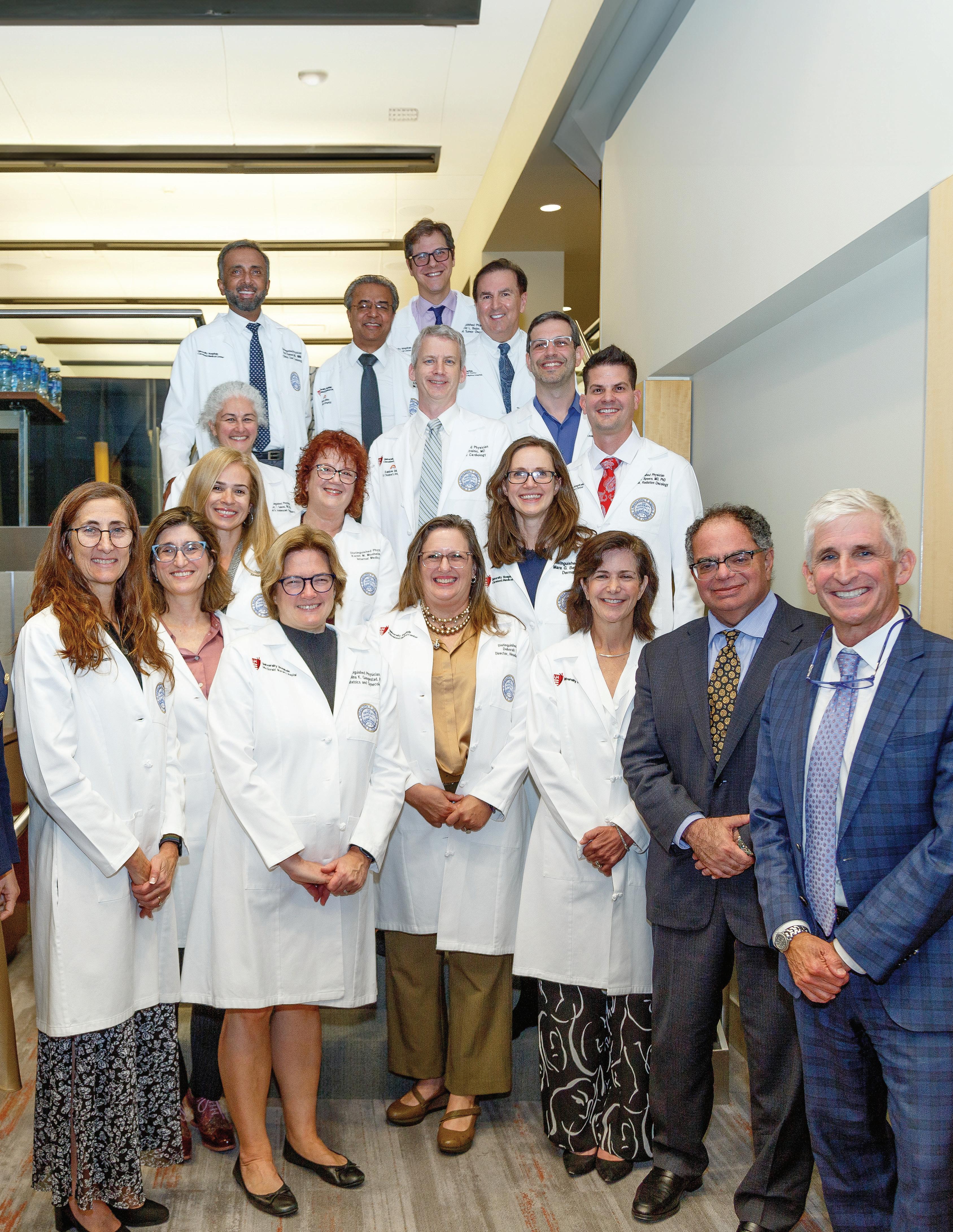

In 2024, University Hospitals recognized the exceptional work of 30 nurses with the UH Distinguished Nurse Award and five nurse leaders with the UH Distinguished Nurse Leader award. Nominated by their peers, direct care nurses who earn the UH Distinguished Nurse Award distinguish themselves in their knowledge, compassionate care, professional development, teamwork, teaching and service to patients and the nursing profession. The UH Distinguished Nurse Leader Award recognizes nurse leaders who exemplify the UH Leadership promise: to inspire, innovate, and achieve. New in 2024, University Hospitals honored a UH Distinguished Nurse Researcher who advances the science of nursing research and is actively involved in research, publications and dissemination of knowledge.
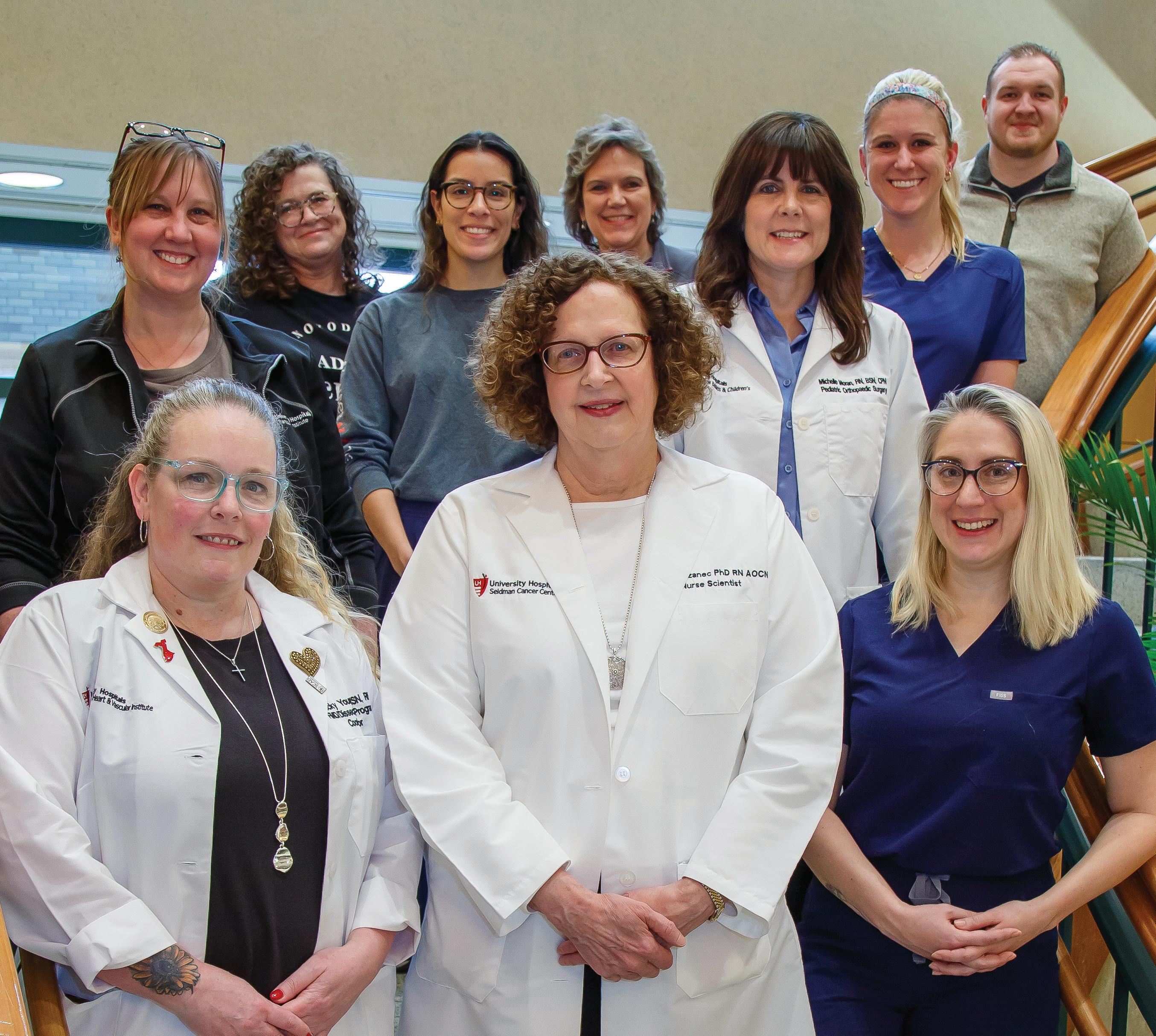
Erica Carpenter, RN
Senior Transplant Coordinator, UH Cleveland Medical Center
Renee DeLong, RN
Service Leader Mather OR, UH Cleveland Medical Center
Madeline Duncan, RN
Clinical System Liaison, UH IT Hospital & EMR Systems
Dana Eaton, RN
Medical Oncology, UH St. John Medical Center
Sandra Estrada, LPN UH Home Care
Edyta Fortney, RN
Medical Oncology, UH Geauga Medical Center
Tyler Hornof, RN
UH Rainbow Babies & Children’s Hospital at UH Ahuja Medical Center
Elizabeth Justin, RNFA
Assistant Nurse Manager MICU, UH St. John Medical Center
Diane Kline, RN
Portage Jail Services
Anne Kohler, RN
Medical Oncology, UH Seidman Cancer Center

Audrey Kolozsi, RN
Senior Improvement Nurse, UH MacDonald Women’s Hospital
Kristina Krumrei, RN
Cardiac ICU, UH Cleveland Medical Center
Kara Ladaika, RN
Radiation Oncology, UH Cleveland Medical Center
Melissa Lindley, RN
Radiation Oncology
UH Cleveland Medical Center
Laura Lucchesi, RN
Cardiac Rehabilitation, UH Harrington Heart & Vascular Institute
Beth McCluskey, RN
Mather OR Nurse, UH Cleveland Medical Center
Jennifer Menchen, RN
PICU Nurse, UH Rainbow Babies & Children’s Hospital
Michelle Moran, RN
Pediatric Orthopaedics
UH Rainbow Babies & Children’s Hospital
Christine Pajestka, LPN
Pediatric Services, UH Ambulatory
Amy Patterson, RN
Nursing Professional Development Specialist Critical Care
Kathleen Brown, RN
OR Nurse Manager, UH Ahuja Medical Center
Mackenzie Cappelli, RN
Nurse Manager, UH Cleveland Medical Center, Lakeside 20
Travis Carter, RN
Nurse Manager, UH St. John Medical Center
Stephen Dropcho, CCRN
Nurse Manager, UH Cleveland Medical Center, Cardiac ICU
Susan Mazanec, PhD, RN, AOCN, FAAN Nurse Scientist, UH Seidman Cancer Center
Deborah Platt, RN
Wound Care Nurse, UH Geauga Medical Center
Lauren Sahagian, RN, Care Coordination Otolaryngology, UH Ambulatory
Christina Seafler, RN Surgery, UH Ambulatory
Paula Sears, RN UH Beachwood Medical Center
Elizabeth Seidel, RN UH Home Care
Sharon Spellacy, RN Stem Cell Transplant Program at UH Cleveland Medical Center
Katina Walker, RN UH Enterprise Staffing Services
Rachel Weck, RN
Patient Navigation, Otolaryngology, UH Ambulatory
Rebecca Young, RN
UH Harrington Heart & Vascular Institute at UH Ahuja Medical Center
Ailene Zaebst, RN
Assistant Nurse Manager Bariatric Clinical Unit, UH Parma Medical Center
Danielle Sindelar, MSN, RN, CMSRN
Chief Nursing Officer, UH TriPoint Medical Center
Because of You: The Campaign for University Hospitals has received more than $1.5 billion in community support towards an ambitious $2 billion goal. This was made possible thanks to $262.3 million in contributions in 2024, marking our sixth consecutive year of record-breaking support.
Like hospital systems across the country, University Hospitals has faced challenges since the pandemic, including labor shortages and rising drug prices. This incredible milestone demonstrates the passion and generosity of our community and is a testament to the expert care delivered every day by our caregivers.
“The shifting healthcare landscape has necessitated difficult decisions over recent years, but UH continues to navigate the storm by focusing, first and foremost, on those it serves,” said campaign co-chair Shelly Adelman.
“High-quality, compassionate care is a UH hallmark,” added campaign co-chair Dee Haslam. “The community celebrates this care through their charitable giving.”
Because of You: The Campaign for University Hospitals endeavors to advance the care of patients in every corner of our community and beyond. Learn more at UHgiving.org/BecauseofYou


“High-quality, compassionate care is a UH hallmark.”
– Dee Haslam
Announced in August 2024, a $15 million gift from Iris S. and the late Bert L. Wolstein is advancing the University Hospitals mission and giving rise to the Iris S. and Bert L. Wolstein Center, a state-of-the-art education, conference and training facility that will be built at UH Cleveland Medical Center. Mrs. Wolstein’s visionary lead gift launched a campaign to fully philanthropically fund the new center.
“Over decades of giving, the Wolsteins have made an indelible mark at UH and positively impacted countless lives,” said Cliff A. Megerian, MD, FACS, UH CEO and Jane and Henry Meyer Chief Executive Officer Distinguished Chair. “This new gift places them among the most significant donors in UH history.”
UH Cleveland Medical Center is one of few major U.S. academic medical centers without an education and conference center, but boasts one of the nation’s largest residency programs, with nearly 1,200 residents and fellows. The Iris S. and Bert L. Wolstein Center will transform UH’s capacity to convene and train healthcare professionals. In addition to conferences, lectures and events, the 30,000-square-foot center will house a ballroom, classrooms, simulation labs, breakout space, and more to support caregiver education and training.
“This gift is profoundly meaningful to me and something that I know Bart would have been thrilled to do,” said Iris S. Wolstein.
“UH is a world-class healthcare system with unparalleled caregivers – they deserve a space to learn the best clinical practices, refine and innovate new care models, and then export those ideas across the world.”



In September 2024, nearly 400 friends and benefactors of UH gathered at the Cleveland Museum of Art for the Annual Society of 1866 Celebration. Dee and Jimmy Haslam received the Samuel L. Mather Visionary Award, while Matthew J. Kraay, MD, MS, and Lolita “Lolly” M. McDavid, MD, MPA, were awarded the 2024 Distinguished Physician Award.
In 2023, a visionary gift of $20 million from Dee and Jimmy Haslam established the UH Haslam Sports Innovation Center led by James E. Voos, MD, Chair, UH Department of Orthopedic Surgery; Jack and Mary Herrick Distinguished Chair in Orthopaedics and Sports Medicine; Head Team Physician, Cleveland Browns; and visionary of the UH Drusinsky Sports Medicine Institute. The new center strategically finds, supports and invests in the world’s best innovations in sports medicine to enhance performance, reduce injury and promote recovery for professional and recreational athletes. Managing Partners of the Haslam Sports Group, Dee and Jimmy are active community leaders. Dee serves as Vice-Chair of the UH Board of Directors and Co-Chair of the Because of You campaign.
A leader in joint reconstruction, Dr. Kraay dedicated 40 years to UH, serving as Director of Joint Reconstruction and Arthritis Surgery until his retirement in 2023. He co-founded UH’s implant retrieval program, a key research initiative, alongside Clare Rimnac, PhD, of Case Western Reserve University. With more than 100 national and international presentations, Dr. Kraay is among a highly select group of surgeons in both The Hip Society and The Knee Society.
Dr. McDavid has led child advocacy efforts at UH Rainbow Babies & Children’s Hospital for over 25 years, transforming the Child Protection Program and spearheading nationally adopted initiatives such as the “No Hitting Zone.” Recognized by numerous professional organizations, she is also a recipient of the Leonard Tow Humanism in Medicine Award from the Arnold P. Gold Foundation.

At University Hospitals, Endowed Chairs, Directors and Master Clinicians recognize leaders who are shaping the future of patient care, research and medical education. They also serve as a lasting tribute – honoring loved ones, expressing gratitude for exceptional care and advancing innovation in medicine.
In 2024, our generous supporters helped establish seven new endowed positions, bringing the total to 165 across UH. To learn more, visit UHGiving.org/endowedpositions
Miggo Family Chair in Cancer Research
Funded by: Kathy and Steve Miggo Family Foundation, with support from the Dr. Donald J. and Ruth W. Goodman Philanthropic Fund of the Cleveland Foundation
Appointee: Pedro Barata, MD, MSc, FACP
Robert and Melissa Shearer Master Clinician in Integrative Oncology
Funded by: Robert J. Shearer, with support from the Dr. Donald J. and Ruth W. Goodman Philanthropic Fund of the Cleveland Foundation
Appointee: Santosh Rao, MD, ABOIM
Mark P. Schumann and Christina M. Schumann Chair in Spinal Neurosurgery
Funded by: Mark P. and Christina M. Schumann
Appointee: Gabriel A. Smith, MD
William and Eleanor Veverka Semenik Chair in Interventional Cardiology
Funded by: Eleanor Semenik, with support from the Dr. Donald J. and Ruth W. Goodman Philanthropic Fund of the Cleveland Foundation and many friends
Appointee: Gregory T. Stefano, MD
Judie and Chuck Miller Chair in Colon Cancer Research
Funded by: Judie and Chuck Miller, with support from the Dr. Donald J. and Ruth W. Goodman Philanthropic Fund of the Cleveland Foundation
Appointee: David L. Bajor, MD
Françoise Adan, MD, Endowed Director in Connor Whole Health Leadership
Funded by: Many colleagues and friends
Appointee: David W. Miller, MD, Lac
Patti and Ernie Novak Distinguished Chair in Research and Education Leadership
Funded by: Patti and Ernie Novak

UH BOARD OF DIRECTORS
John G. Morikis, Chair•
Susan B. Haslam, Vice Chair•
Jerry L. Kelsheimer, Vice Chair•
Joel E. Adelman•
John M. Antonucci•
Robin L. Baum•
Daniel A. Carestio•
Michele L. Connell•
Jenniffer D. Deckard•
Christopher M. Gorman•
Elizabeth M. Hammack•
Howard W. Hanna IV•
Eric David Hargan•
J. David Heller•
Carey F. Jaros•
Harold V. Jones•
Cesare R. Mainardi•
Heidi G. Petz•
Steven Potash•
William A. Priemer•
Ronald B. Richard•
Joseph F. Sabik, MD
Neil Sethi, MD•
Robert C. Smith•
Sheila G. Talton•
Eddie Taylor Jr.• Ex-Officio
Anne F. Beer•
Irwin Haber•
Cliff Andrew Megerian, MD, FACS
Lynn S. Miggins•
Vasu Pandrangi, MD
William A. Young Jr.•
UH CLEVELAND MEDICAL CENTER
William A. Priemer, Chair•
David M. Carr, Vice Chair•
Ann C. Aber•
Cheryl A. Agranovich, RN, BSN•
Teresa Metcalf Beasley•
Timothy F. Cercelle•
Jill Goubeaux Clark•
David A. Doll•
Cindy Schulze Flynn•
Timothy S. Harris•
Ansir Junaid•
Andrew L. Kline•
Sean P. Richardson•
Victoria Tifft• Ex-Officio
Stathis Antoniades, MPH
Stacey M. Edwards•
Cliff Andrew Megerian, MD, FACS
Donna M. Plecha, MD

UH
Thomas W. Adler
Samuel E. Ake Jr.
Blake Andres
Craig Arnold
Kate A. Asbeck
Terry S. Atkinson
Michael K. Baach
Marcia J. Ballinger, PhD
Scott J. Balogh
Andrew J. Banks
Michael T. Barkoukis, MD
Carole Beaty
Jonathan M. Beckett
Thomas W. Benda
Morris Wade Beverage Jr., EDM
Gregory P. Bloxdorf, DO
Mary Jo Boehnlein
Sally H. Bradley
Dan A. Bragg
Christopher Brecht
Barbara Shelton Broome, PhD, RN, FAAN
Harvey W. Burkholder
Gerald M. Burma, MD
Paul H. Carleton
Polly A. Chandler
William E. Childers
Julius Ciaccia Jr.
Paul Clark
Mayor Dennis M. Clough
Richard J. Coe
Michael A. Cogan
Duane E. Collins
Marjorie L. Conner
Kesha A. Conway
Kevin A. Corcoran
Maryann R. Correnti
Timothy R. Cowen
James Crawford
David A. Daberko
Richard L. Dana Jr.
Patricia Dawson
Michael E. Debs, MD
Charles V. Deck
Michael A. DeLuke
Lesley A. DeSouza
David E. Dix
Alton F. Doody III
Marlene R. Dorsey, PhD*
Indrani Egleston
William J. Emrhein
Don R. Esch
Michael Feuer
Robert A. Forino
Raymond L. Frank
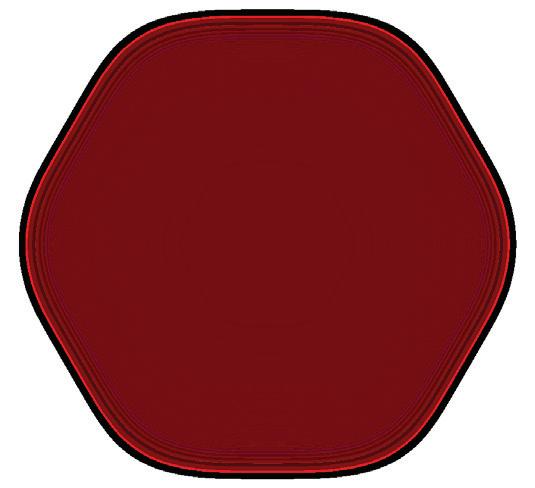



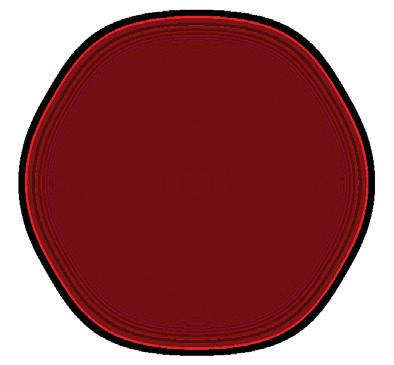
Matthew J. Frantz, DO
Matthew C. French
Richard J. Frenchie
Glenn H. Frohring
Lauren A. Gardner
William H. Gary Sr.
The Honorable Patricia A. Gaughan
Kent A. Geist
Jean M. Gianfagna
Thomas Gilman
Rodney M. Gisztl
Robert A. Glick
David Goldberg
Davina Jeanette Gosnell, PhD, RN*
Wendolyn J. Grant
Judith C. Greig, MSN, RN
Morgan R. Griffiths Jr.
Dawn Gubanc-Anderson, RN, MSN, FACHE
John R. Gusz, MD
Brian E. Hall
Charles Edwin Hallberg
Jeffrey D. Hamilton
Polly M. Hanff
Charles W. Hardin Jr.
Gordon D. Harnett
Brenda S. Heimann
Brian R. Hoagland
James E. Hockaday
Richard A. Horvitz
Joyce A. Hunt
Susan R. Hurwitz
Christopher J. Hyland
Donna L. Imhoff, PhD
Kellie L. Jarzembak, CNP
Tracy A. Jemison Sr.
David E. Jerome
James O. Judd
The Honorable Peter J. Junkin
P. James Kamer Jr.
John D. Karlovec
Douglas J. Keller
Terri A. Kennedy
Ward L. Kinney
Stuart F. Kline
Barbara L. Knecht
George M. Kolman Jr.
Lee M. Koury
Reverend Timothy Kraus
Jack C. Krise, Jr.
William F. Lacey
Collette A. Laisure
Patrick J. Lally
Deborah A. Lauer
William B. Lawrence
Raymond K. Lee
Michael D. Legeza
Kimm Leininger
Edith Lerner, PhD

David B. Levine
Rev. Janet A. Long*
Joseph Lopez
Ramon Lugo III
Sara A. MacKinlay
Kareem D. Maine
Adrian Maldonado
John R. Male
Kathleen Malec
Sharon M. Martin
JoAnn E. Mason
Thomas J. McGee




Michael A. Martin, MD
Lorraine E. McLaughlin
S. Sterling McMillan III
Darrell L. McNair
Edward M. McQuiston
Philip C. Mercado
Marcia J. Miller
Peter C. Miller
Brock E. Milstein
Timothy M. Morgan
Joseph Moroski
Patrick S. Mullin*
Thomas G. Murdough Jr.
David M. Nedrich
Christopher M. Newcomb
Gordon L. Ober*
Thomas P. O’Donnell
Robert W. Olesen
Judge David M. Ondrey
Lydia B. Oppmann
Paige H. Orvis
Melissa A. Owen, MSN, RN
Carol A. Owens
Craig A. Parker
Gary L. Pasqualone
Jacqueline M. Patton
Martin S. Paul
Stamy S. Paul
Deborah Petrone
Cheri Phyfer-Kubu
Angelo N. Pimpas
Deborah L. Plummer, PhD
Mark J. Plush, CPA
Maria A. Polito
Jack H. Prause II
Julie Adler Raskind
Willard A. Raymond Jr.
Gwenay S. Reaze-Coniglio
Joan E. Reidy
Robert S. Reitman
Sister Mary R. Ress


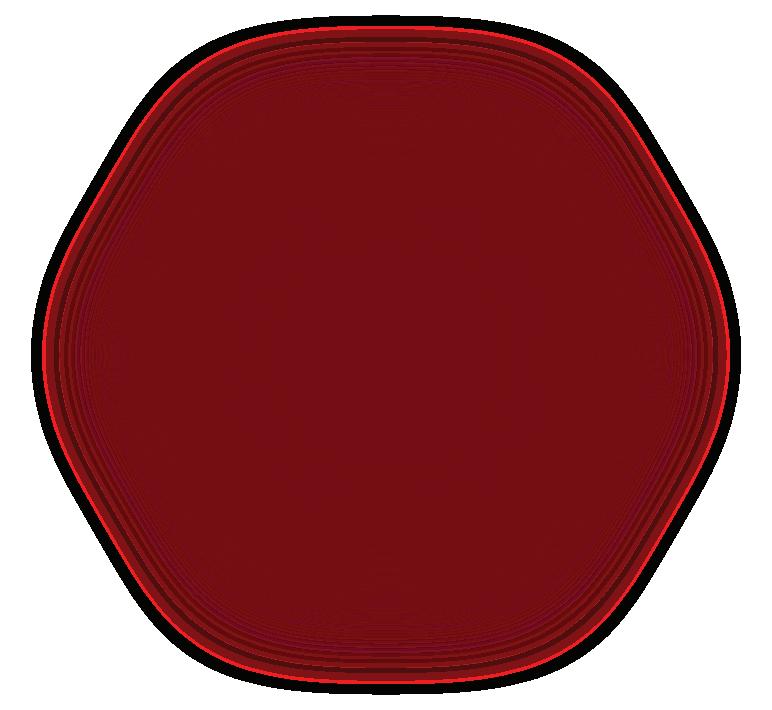






A. William Reynolds
David M. Reynolds Sr.
Kenneth C. Ricci
Philip C. Ridolfi
Daniel R. Riemenschneider
Lori A. Riley
Louis D. Ripepi Jr.
Rob G. Risman
Gregory C. Robinson
Myron F. Robinson
Enid B. Rosenberg
Spencer A. Ryan
Therese M. Safranek
Michelle L. Sahr
Steven E. Sargent
Stephen A. Schultz
Cynthia V. Schulz
Thomas W. Seitz
Thomas A. Selden

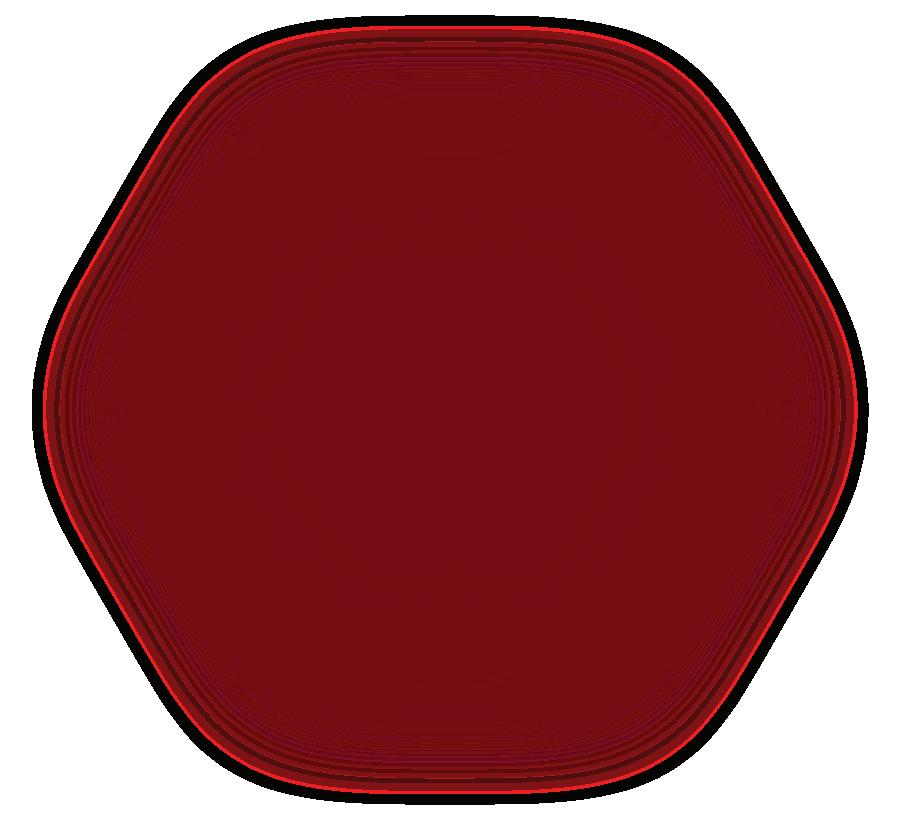




Frederick G. Wilder
Lorna Wisham
Andrea D. Wittine
Margaret W. Wong
Jacqueline F. Woods



William A. Wortzman
John D. Wright Jr.*
May Louise Hinton Wykle, PhD, RN, FAAN, FGSA
Thomas M. Wynne
William E. Young
Claudio Zanin
Keith E. Ziegler
Lorna A. Zeller
Daniel N. Zelman
LIFETIME TRUSTEES
Sheldon G. Adelman•
Monte Ahuja•
Kenneth D. Semelsberger
Nino J. Seritti
Patricia A. Sharpnack, DNP, RN
Annette Shaw
Raymond E. Sines
Margaret Singerman
John R. Sinnenberg
Megan E. Sippey, MD
Roger E. Sisson*
Gregory J. Skoda
Michael J. Skufca, DDS
Geri M. Smith
Reverend Hilton O. Smith
Sharon Sobol Jordan
Dean Angela Spalsbury, PhD
Sister Diana Stano, PhD
C. Anthony Stavole
Andrew M. Stein, MD
Jeffrey R. Steinhilber
Robert M. Stern, MD
James E. Supplee
Joseph A. Talerico
George W. Taylor
Robert L. Taylor
Kathleen F. Terrell
Donna Thomas
Jerry Sue Thornton, PhD
Keith R. Tompkins
Timothy R. Toppen
Thomas H. Trexler
Stephen E. Varckette
Les C. Vinney
John W. Waldeck Jr.
Penni Weinberg
Danielle H. Weiner
James W. Wert
The Honorable Robert C. White
Arthur F. Anton•
David A. Camiener•
Christopher M. Connor•
Ralph M. Della Ratta Jr.•
Heather R. Ettinger•
Kenneth D. Hardy•
Ann Harlan•
Ernest J. Novak Jr.•
William J. O’Neill Jr.•
James F. Patterson•
Sandra Pianalto•
Richard W. Pogue•
Alfred M. Rankin Jr.•
HONORARY TRUSTEES
Usha Ahuja•
Monte Ahuja•
Kathleen A. Coleman•
Christopher M. Connor•
Sara H. Connor•
Alexander M. Cutler•
Sarah S. Cutler•
Charles F. Dolan*
Lawrence J. Dolan•
Grace F. Drusinsky•
Michael Drusinsky•
Charles D. Fowler•
Charlotte A. Fowler•
Holley Fowler Martens•
Chann Fowler-Spellman•
Roe Green•
Jill Harrington•
Lydia L. Harrington•
Nancy A. Harrington•
Ronald M. Harrington•
Ronald G. Harrington•
Norma Lerner•
Robert F. Martens•



Barry J. Minoff•
Roy D. Minoff•
Karen L. Mole•
Eleanore R. Risman*
Kathy Risman•
Robert R. Risman*
Jane H. Seidman•
Lee G. Seidman•
Amy S. Southard•
Michael S. Southard•
Edward F. Spellman•
Kimberly Ann Wesley•
Iris S. Wolstein•
UH EAST MARKET
Irwin Haber, Chair•
Connie F. Bowler, RN, Vice Chair•
Anthony Siracusa, Vice Chair•
Stanley C. Ball•
Lauren Rich Fine•
John T. Fitts•
Richard L. Garcia•
Dale H. Markowitz•
Robyn Strosaker, MD
Ex-Officio
William Benoit
Ashley Carlucci, MSN, RN
Donald P. DeCarlo, MD
UH LAKE HEALTH
Brett S. Himes, Chair•
Raymond J. Paganini, Vice Chair•
Richard J. Bennett•
Ashley Carlucci
Danielle Chickerella
Susan Culotta•
Paul R. Hinchey, MD
Thomas P. Jubeck•
Lisa M. Klammer•
Michael E. Mayher•
Chetan P. Patel, MD, MBA, CHFP•
Julie A. Senita, PhD•
Paul C. Sirko•
David J. Sylvan
Daniel L. Wilson•
UH SOUTH MARKET
Anne F. Beer, Chair•
Michael A. Lewis, Vice Chair•
Scott J. Flynn•
Michael J. Kelly Sr.•
Paul R. Myers•
John R. Ryan• Ex-Officio
Benjamin S. Prestegaard, MD
Julia A. Skarbinski
Brian Monter
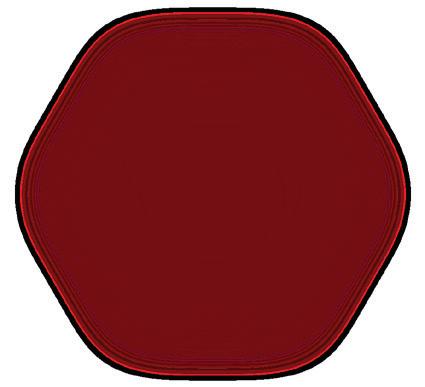

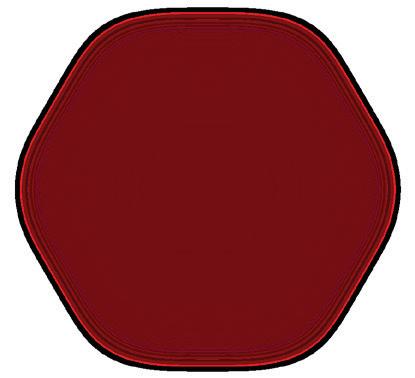
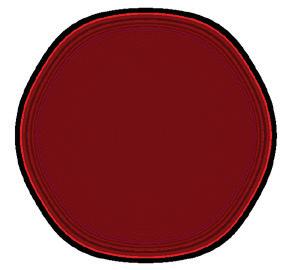


UH WEST MARKET
Lynn S. Miggins, Chair•
Timothy A. Boyko, Vice Chair•
Diane J. Davie, Vice Chair•
Kevin J. Flanigan•
Christopher A. Hirschler, PhD•
Eric J. Moore•
Brenda T. Spear, DNP, RN•
Scott Wilkinson•
Vivian Yates, PhD• Ex-Officio
Brian S. Monter
Kieran M. Kercher
Kimberly A. Togliatti-Trickett, MD
UH RAINBOW BABIES & CHILDREN’S HOSPITAL BOARD
Jill Goubeaux Clark, Chair•
Timothy S. Harris, Vice Chair• Jana Lea Bazzoli
Teresa Metcalf Beasley•
Patricia M DePompei, RN, MSN
Michael Dingeldein, MD
David A. Doll•
Stacey M. Edwards•
Cindy Schulze Flynn•
Michael Glotzbecker, MD
Jane Hamrle
Dinah Kolesar•
Marlene R. Miller, MD Ex-Officio
Stathis Antoniades, MPH
William A. Priemer•
5805 EUCLID INC.
Stathis Antoniades, MPH
Timothy S. Harris•
Stacey M. Edwards•
Constance R. Hill-Johnson•
Tania M. Menesse•
Richelle A. McCoy•
•Board of Trustees
*Deceased








Cliff A. Megerian, MD, FACS
Chief Executive Officer
Jane and Henry Meyer
Chief Executive Officer
Distinguished Chair
Harlin G. Adelman, JD Chief Legal Officer
Stathis Antoniades, MPH, FABC
President, UH Cleveland Medical Center & Academic Market
Bradley C. Bond Chief Financial Officer

Celina C. Cunanan, MSN, APRN-CNM Chief Health Impact Officer

Heidi L. Gartland, MHA, FACHE, CDM Chief Government & Community Relations Officer

Janna Bazzoli
Interim President and Chief Operating Officer, UH Rainbow Babies & Children’s and UH MacDonald Women’s hospitals
Michelle D. Hereford, MSHA, RN, FACHE
System Chief Nursing Executive Ethel Morikis Endowed Chair in Nursing Leadership

William A. Benoit, MOT, MBA, FACHE
Market President and Chief Operating Officer
Paul R. Hinchey, MD, MBA Chief Operating Officer
Interim President, UHPS

Sherri L. Bishop, ESQ. Chief Development Officer



































Nicole Maronian, MD President, UHMG
Richard W. and Patricia R. Pogue
Leadership Chair in Otolaryngology-Head and Neck Surgery
Daniel I. Simon, MD
President, Academic & External Affairs and Chief Scientific Officer
Ernie and Patti Novak Distinguished Chair in Healthcare Leadership
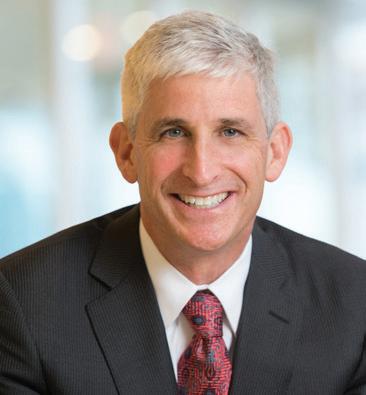
Brian S. Monter, MSN, RN, MBA
Market President and Chief Operating Officer
Thomas D. Snowberger Chief Administrative Officer

Peter J. Pronovost, MD, PhD, FCCM
Chief Quality & Clinical Transformation Officer
Veale Distinguished Chair in Leadership and Clinical Transformation
LaVonne E. Pulliam, JD
Chief Compliance Officer
Robyn Strosaker, MD Market President and Chief Operating Officer

David Sylvan Chief Strategy, Innovation & Marketing Officer
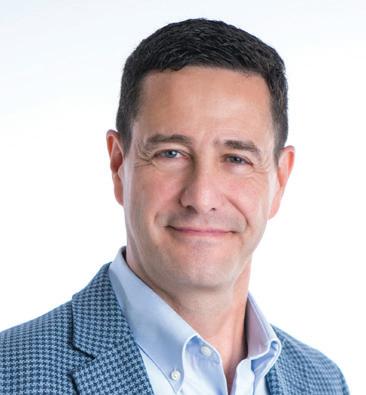
Mehdi H. Shishehbor, DO, MPH, PhD President, UH Harrington Heart & Vascular Institute
Angela and James Hambrick Chair in Innovation
Theodoros N. Teknos, MD President, UH Seidman Cancer Center
Jane and Lee Seidman Chair in Cancer Innovation



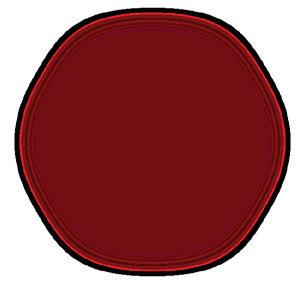
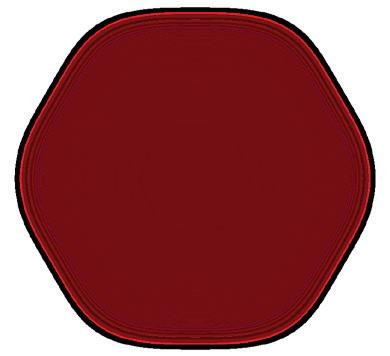


Vojislav George Topalsky, MD President, UHMP



















